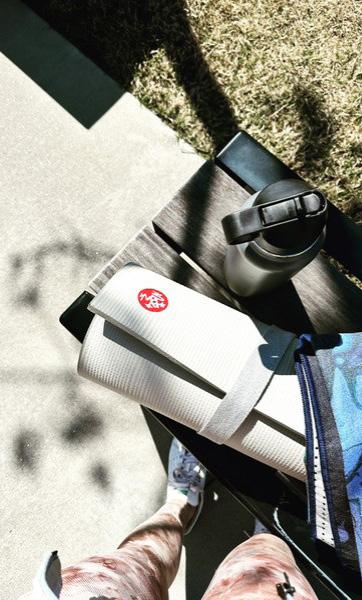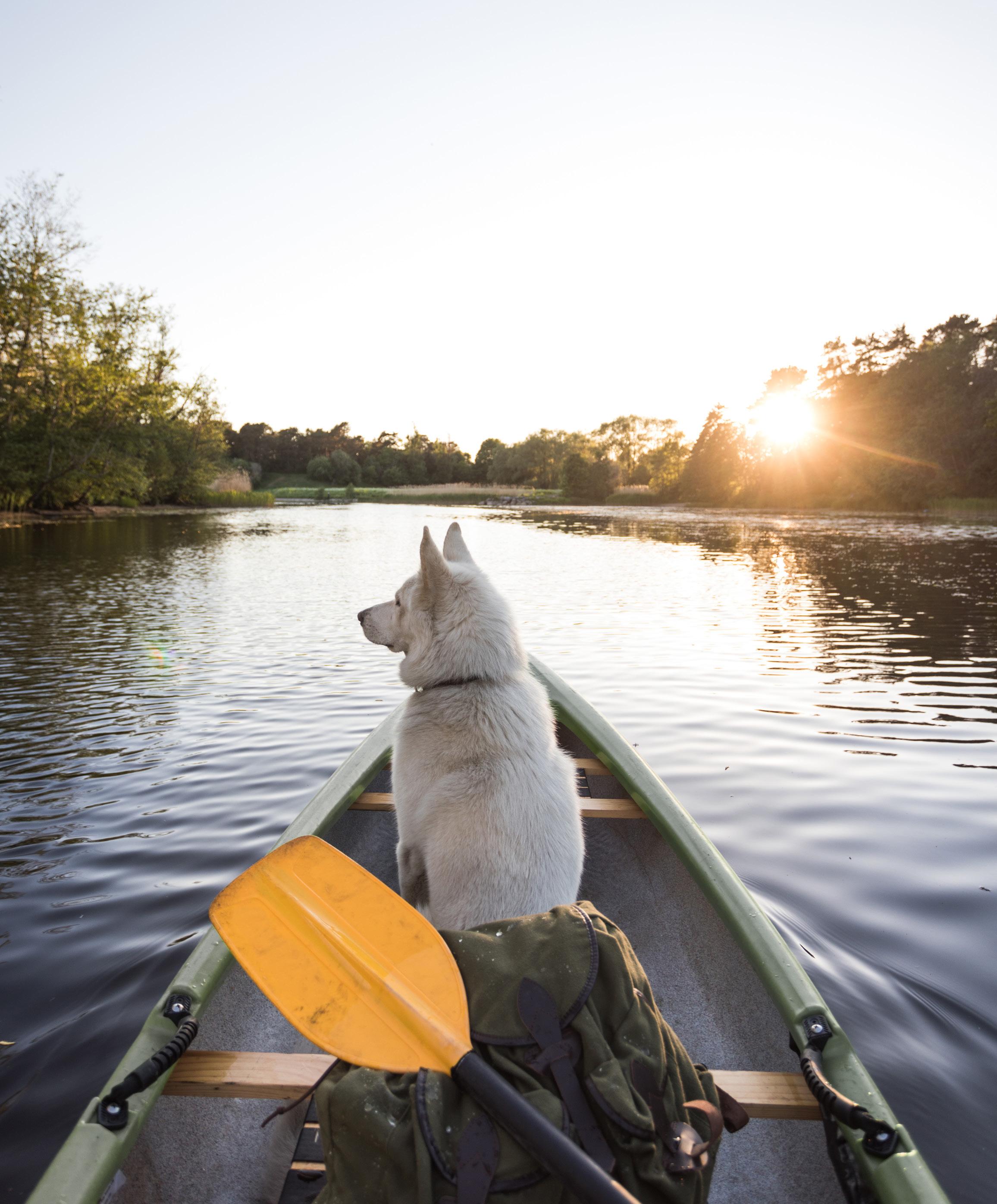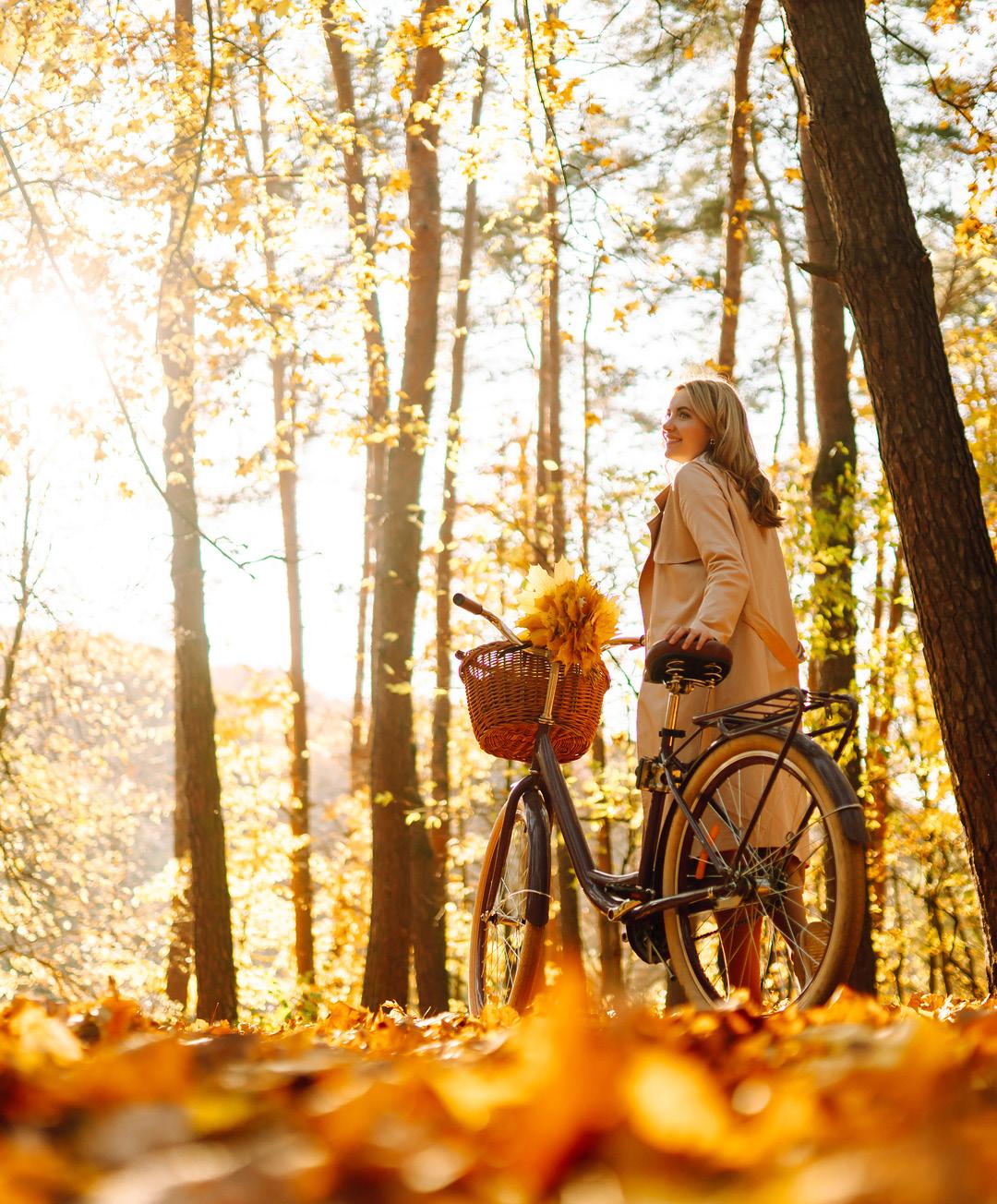SOUTHERN CHARMS: A Fall Road Trip Extravaganza
CAMPFIRE COOKING
ADVENTURES: Embrace the Rustic Flavors of the Outdoors
HORSES HEALING HUMANS


SOUTHERN CHARMS: A Fall Road Trip Extravaganza
CAMPFIRE COOKING
ADVENTURES: Embrace the Rustic Flavors of the Outdoors
HORSES HEALING HUMANS

South Carolina offers hundreds of scenic hiking, biking and paddle trails. Find your favorite trail, path, or activity, with all the necessary information at your fingertips.
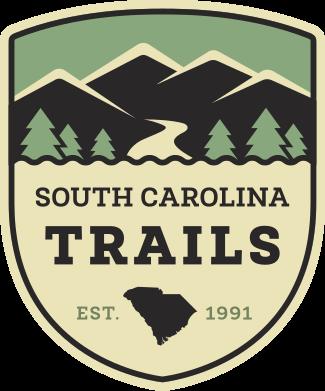

We believe the idea of tradition is ingrained in the souls of Southerners. We have a relentless respect for our deep heritage and an unwavering dedication to living out the traditions of the past.
We believe tradition can be honored while simultaneously welcoming contemporary thought and style and that there is a movement to merge these two lifestyles through intentional, healthy and meaningful living.

We believe happiness is rooted in simplicity. If our minds and places are free of clutter, there is more room for things that matter.
We believe local is better. It’s about being a part of a larger community. It’s about connecting with those who grow, catch, brew and create our food and that closer means fresher, tastier and healthier. It’s choosing fruits and vegetables in season, drinking wines from vineyards in the region, seeking out the work of local artisans and supporting independent, locally owned stores.
We believe in leaving a positive fingerprint. The measure of our success will be the condition on which we leave the world for the next generation.
We believe these thoughts embody the emergence of the “New South” and we’re honored to be presenting this movement in our pages.
Thank you for joining us on this journey.
8-17: SOUTHERN CHARMS: A Fall Road Trip Extravaganza
18-25: SANCTUARY, OH SANCTUARY
Who’s Going to Save You?
26-29: AUTUMN ON THE ANDREW PICKENS
30-33: THE VERY BEST MEN
Four signers of the Declaration of Independence and why every South Carolinian should remember their names
44-47: CAMPFIRE COOKING ADVENTURES:

Embrace the Rustic Flavors of the Outdoors
48-51: LUNCH on the TRAIL

52-55: INTRO to CILANTRO
58-61: FINDING THE SOUL of a CITY
64-69: TIMROD LIBRARY

70-75: HORSES HEALING HUMANS
78-79: MAKE TIME for WELLNESS

As the days grow shorter and the air carries a crisp hint of autumn, we welcome you to the enchanting pages of The Southern Edge Magazine's Fall 2023 issue. This season, we take you on a journey through the heartwarming and picturesque South, exploring its hidden gems, culinary delights, and charming decor. So, grab your favorite cozy blanket, settle by the fire, and immerse yourself in the magic of this captivating season with us.
Our feature stories are an ode to the Southern places that come alive in all their fall glory. Whether you're a seasoned explorer or a newcomer to this enchanting region, our handpicked destinations will leave you spellbound. And, what better way to celebrate the crisp evenings and cozy nights than with the crackling warmth of a campfire? We are sharing a few of our favorites that we are certain will become your favorites as well. So, gather around the fire with loved ones and savor the simple pleasures of the season.
As we embrace the Fall season with open arms, we would like to extend our heartfelt gratitude to our talented team of writers, photographers, and contributors who have captured the essence of the South in all its autumnal glory. We are also immensely grateful to our loyal readers who continue to inspire us to showcase the beauty and allure of this unique region.
The Southern Edge Magazine is a celebration of the South's diverse culture, rich heritage, and vibrant traditions. With each issue, we strive to bring you closer to the heart of the Southern experience. As you flip through these pages, we hope you'll find inspiration, joy, and a renewed appreciation for the wonders of this beloved season.
Thank you for embarking on this delightful journey with us. From our family to yours, we wish you a spectacular autumn filled with cherished moments, flavorful gatherings, and the joy of exploration.
Warm regards,


GET THE SOUTHERN EDGE MAGAZINE DELIVERED RIGHT TO YOUR DOOR!

thesouthernedgemagazine.com
Michelle McCollum
CEO & Editor in Chief
Anna Joyner
Artistic Director & Production Manager
Yuka Greer
Managing Editor & Operations Director
Abbey Stevens
Editorial Assistant
Lauren Alcorn
Editorial/Circulation Assistant
SOUTH CAROLINA
NATIONAL HERITAGE CORRIDOR BOARD OF DIRECTORS
Don Alexander
Bob Alexander
Donna Livingston
Neal Workman
Ken Durham
Rhoda Green
Dr. Susan Johnson
Hope Blackley
SOUTH CAROLINA
NATIONAL HERITAGE CORRIDOR
Publisher

Profits from The Southern Edge will go back into the preservation, conservation, and environmental educational programs of the South Carolina National Heritage Corridor.

National Heritage Areas are designated by Congress as places where natural, cultural, and historic resources combine to tell nationally significant stories.
Disclaimer: The content of this column is for informational purposes only. The content is not intended to be a substitute for professional medical advice, diagnosis, or treatment. Always seek the advice of your physician or other qualified health provider with any question you may have regarding a medical condition. The Southern Edge Magazine (TSE) does not recommend or endorse any specific tests, physician, products, procedures, opinions, or other information that may be mentioned on the magazine. Reliance on any information provided by TSE, TSE employees, other contributors appearing on print issues, website, social network, and other digital platforms is solely at your own risk.
A native of Upstate South Carolina, Benjamin Culbreth is a freelance copywriter who writes for multiple corporate clients and news publications. He enjoys spending time outdoors, whether it’s hiking, camping, or taking pictures of wildlife and landscapes. A graduate of Anderson University, he now resides in West Columbia, South Carolina with his wife and dog. benjaminculbreth.com


Tom Poland grew up in Lincoln County, Georgia, and graduated from the University of Georgia with degrees in Journalism and Education. He taught at the University of Georgia, Columbia College, and the University of South Carolina. He writes about nature and the South and its people, traditions, and lifestyles. His work appears in books & magazines, journals, and newspapers throughout the South. He’s a member of the S.C. Humanities Speakers Bureau. Tom is a recipient of the Order of Palmetto. He lives in Columbia, South Carolina.

Mayumi, a certified anti-aging food advisor and a fermented food sommelier, has lived in Upstate South Carolina and now bases her living in Yokohama, Japan where she continues to share healthy lifehacks and recipes with the Southern Edge. Her motto is to create simple, healthy (calorie, sugar, fat, sodium, etc.) and nutritious meals that can be make ahead. She maintains her health by exercising, eating healthy, watching calories, avoiding snacks between meals, avoiding food and drinks after 8 pm, and taking a bath for detoxing. She enjoys cooking, photography and hiking.

A graduate of both Anderson and Clemson Universities, Darlene has degrees in Journalism and English. She has written professionally for both corporate and news publications for over 35 years. At the same time, she has sought knowledge, training and tools to live a healthier, more spiritually connected life. Certified in numerous energy healing modalities including Reiki, Ama Deus, Access Bars and Intuitive Counseling, Darlene loves helping others find their truth and their life’s passions. She is married, has one grown son, two rescued dogs, Finn (pictured) and Ginger, and two rescued cats, Smokey and Bandit. healingwithsoundsoflove.com

W. Thomas Smith Jr. is a formerly deployed U.S. Marine Infantry leader, counterterrorism instructor, and retired colonel in the S.C. Military Department. A New York Times bestselling editor and an internationally acclaimed writer whose work has appeared in countless newspapers and magazines worldwide, Tom has traveled to Iraq, the Balkans, elsewhere and other wars. He is also a senior officer with the National Security Task Force, S.C. Floodwater Commission. Among Tom’s many awards, honors, and military decorations, he is a recipient of the Order of the Palmetto. uswriter.com
We are always willing to consider freelance photographers & contributors.

Please send queries to info@thesouthernedgemagazine.com
Rachel Ledbetter is a photographer and freelance graphic designer in the Upstate. A graduate of Bob Jones University with a degree in cinematography, she has won awards in both national and international film festivals. She also serves on staff in digital media at her local church in Clemson, and as a mother of five, is passionate about impacting future generations in her community.

Roy Scott is a freelance writer living in Clemson, South Carolina. He was the executive producer of the popular South Carolina public radio program, Your Day, and hosted on-air features about people, places and history. In addition, he executiveproduced the public television nature program, Expeditions with Patrick McMillan, and the travel series, Your Day On the Road. An Air Force veteran, Roy enjoys his volunteer work with military veterans and their families.

Jane Jenkins Herlong is a Sirius XM Humorist, bestselling/award-winning author, professional singer, recording artist and professional Southern humorist. A recent inductee into the prestigious Speakers Hall of Fame, Jane is the best-selling author of four books. A former Miss America contestant, Jane’s award-winning singing and comedy is featured on Sirius XM Radio, Spotify and Pandora Internet Radio. For speaking engagements visitjaneherlong.com

James "Jamie" Saxon is a Red Hills and Cotton native of the South Carolina Upcountry, to which he returned after a couple of decades in other places. A graduate of Furman University, the University of South Carolina, and the Cumberland School of Law of Samford University, he has been a college administrator, worked in private practice and public service, and former associate probate judge for Anderson County. He loves books, jazz, food, friends, labs, and his crazy Southern family.



 Words by Michelle McCollum
Words by Michelle McCollum
As the hot summer days begin to wane and the crisp, cool breeze of autumn starts to set in, there's no better time to embark on a picturesque road trip through charming Southern locales. Nestled among the vibrant foliage, the quaint towns of Brevard and Highlands in North Carolina, and Clemson and Conway in South Carolina offer an enchanting blend of outdoor adventures, local art, and a delightful taste of the region's finest vineyards and breweries. So, pack your bags, hit the open road, and let's explore the magic of these four Southern destinations.




explorebrevard.com


The journey begins in Brevard, N.C., a haven for nature enthusiasts seeking the perfect blend of hiking and biking opportunities. Known as the "Land of Waterfalls," Brevard is surrounded by lush forests, pristine rivers, and cascading waterfalls. The Pisgah National Forest offers an array of trails for all skill levels, each leading to breathtaking vistas and natural wonders. Whether you choose the challenging hike up to Looking Glass Rock or a leisurely bike ride along the scenic Blue Ridge Parkway, the beauty of fall foliage will leave you in awe. Pack a picnic basket and take your time on the trail; after all, the journey is the destination.
In addition to its natural splendor, Brevard boasts a vibrant local art scene. Explore the charming downtown, where art galleries and studios showcase the works of talented regional artists. And, just a stone’s throw away from Brevard is Asheville, N.C., where you can spend an entire day exploring the eclectic River Arts District and end the afternoon with a complimentary wine tasting at the Biltmore Winery Tasting Room.


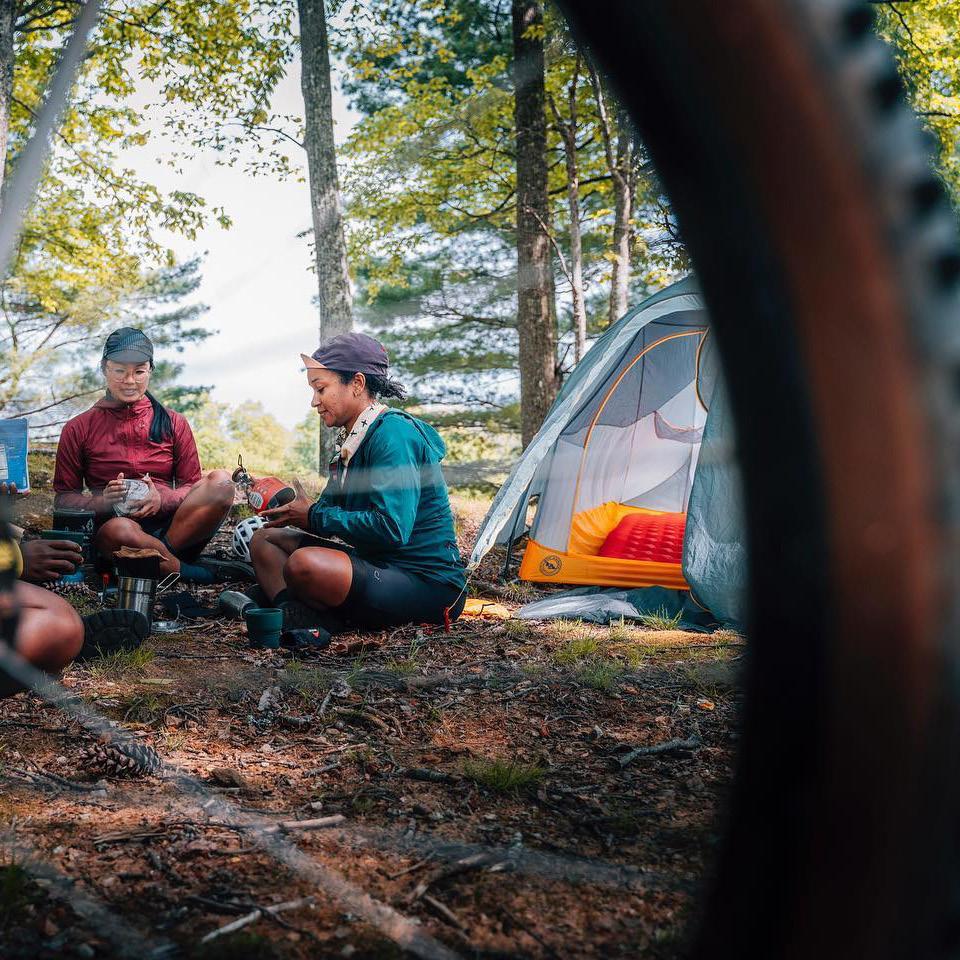



Highlands,
Venture deeper into the Southern highlands, and you'll find yourself in the captivating town of Highlands, NC. Renowned for its high-altitude charm, this mountaintop oasis offers a unique mix of outdoor adventure and refined experiences.



For hikers and nature lovers, the Highlands Plateau Greenway provides an excellent way to explore the town's natural beauty. The trails wind through enchanting forests, past glistening lakes, and alongside rushing waterfalls, immersing you in the splendor of the season. Sunset Rock Trail offers the most panoramic views of the valley and a perfect setting for a romantic evening picnic.
Highlands is also a treasure trove of local vineyards and breweries. Indulge in wine tastings at Highlands Wine Shoppe, where you can sample a selection of the region's finest vintages. For craft beer enthusiasts, Satulah Mountain Brewing Company and the Ugly Dog Public House are must-visit destinations, offering a warm atmosphere and locally brewed delights. If staying overnight, we suggest you try the rustic elegance of Old Edwards Inn and Spa.
highlandschamber.org





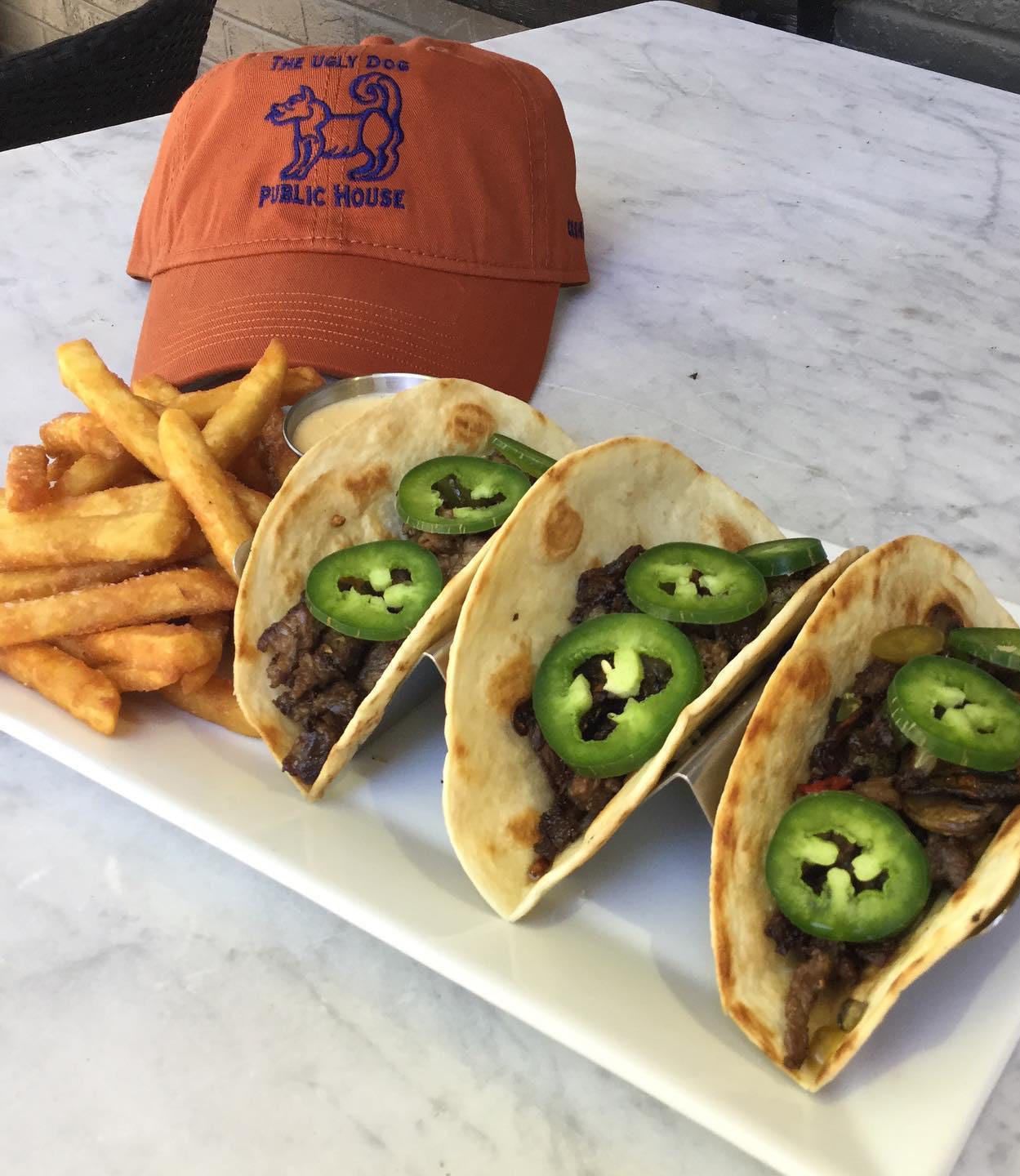

For sports enthusiasts and football fans, Clemson, S.C., is a dream destination, especially during the fall season when football fervor reaches its peak. Home to the Clemson University Tigers, the town comes alive on game days, creating an electrifying atmosphere that you won't want to miss. Consider arriving a day or two early to turn your visit into an extended football weekend, giving you ample time to explore the surrounding area and experience the best of what Clemson has to offer.

Before cheering on the Tigers at Memorial Stadium, also known as "Death Valley," take some time to immerse yourself in the natural wonders that surround the town. The picturesque Lake Hartwell, located just a short drive away, invites you to relax by its tranquil shores, indulge in water sports, or embark on a scenic boat tour. And located in the heart of the Clemson campus is the South Carolina Botanical Gardens with numerous trails and sites perfect for any outdoor enthusiast.
For a dose of history and charm, venture to nearby Pendleton, SC. This historic town boasts antebellum architecture, unique boutiques, and delightful eateries that offer a glimpse into the region's rich heritage. Don't forget to visit the Ashtabula Historic House, a beautifully restored plantation home that provides a fascinating look into the past.
After an exciting game day, unwind with a visit to one of the local breweries in Clemson. Tiger Town Tavern and Loose Change are favorite spots among fans and locals alike, where you can relish a cold craft beer while reminiscing about the game. Don’t forget to wear orange!
Flickr / Mike Burton



 Loose Change Bar & Grill
Tiger Town Tavern
Ashtabula Historic House
South Carolina Botanical Garden
Loose Change Bar & Grill
Tiger Town Tavern
Ashtabula Historic House
South Carolina Botanical Garden
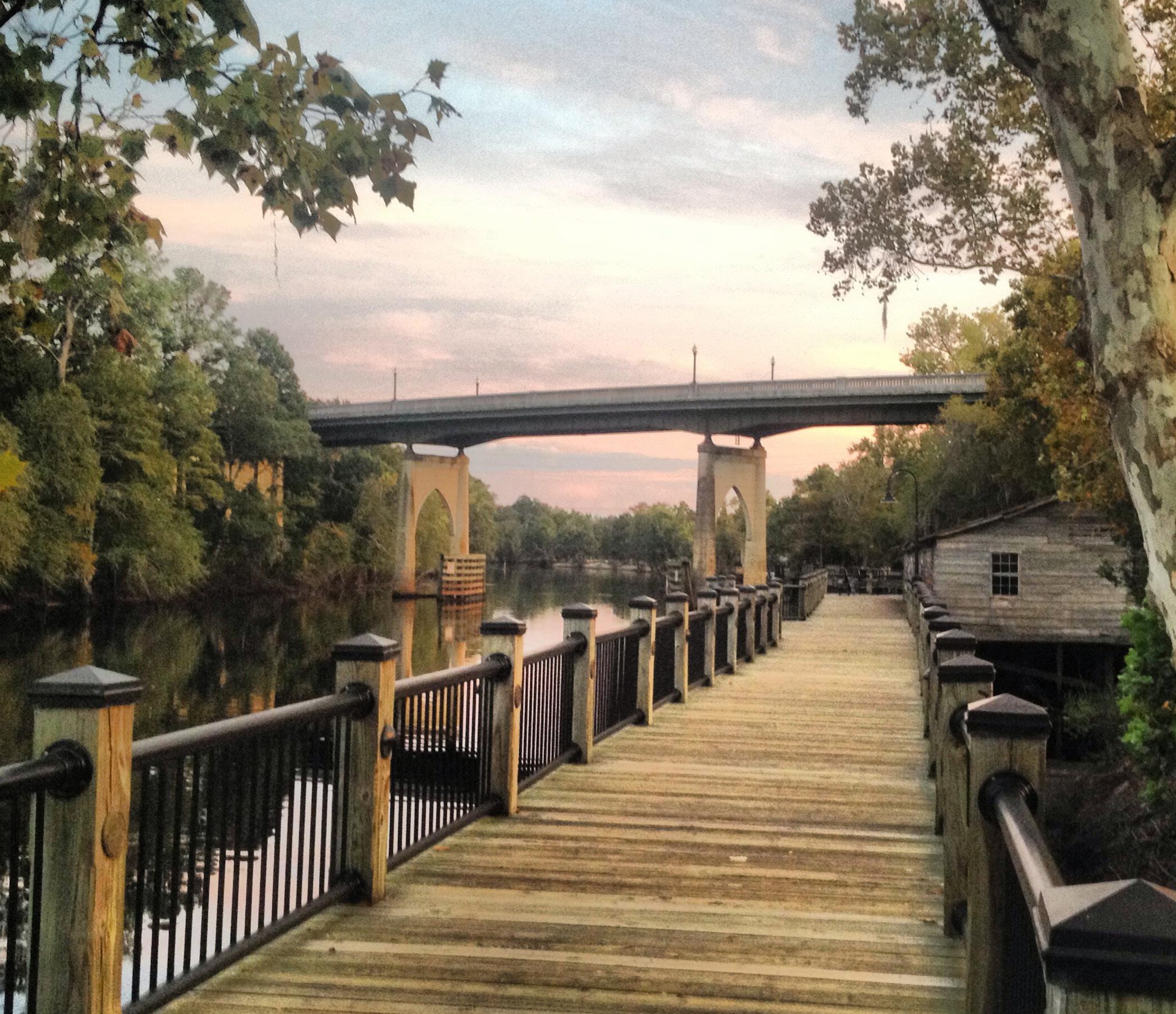

For a more coastal vibe, head to Conway, S.C., where a blend of history and creativity awaits. As one of the oldest towns in South Carolina, Conway exudes a charming, oldworld ambiance with genuine Southern hospitality. Take a leisurely stroll down the Conway Riverwalk, a picturesque boardwalk along the Waccamaw River, offering views of the historic downtown and scenic natural beauty.
In Conway, the local art scene flourishes, with galleries like the Burroughs-Chapin Art Museum featuring diverse exhibits and engaging workshops. Don't miss the chance to explore the historic district's galleries and studios, where you'll discover the works of talented local artists and unique shops for finding that perfect travel memento.
For foodies who love supporting “local,” quaint places like the Crafty Rooster and the Pickled Cucumber provide the perfect immersion into unique local flavors. Additionally, Conway's burgeoning craft beer scene and nearby vineyards like Carolina Vineyards Winery and Boardwalk Winery provide the perfect opportunity to relax, unwind, and enjoy the local atmosphere.



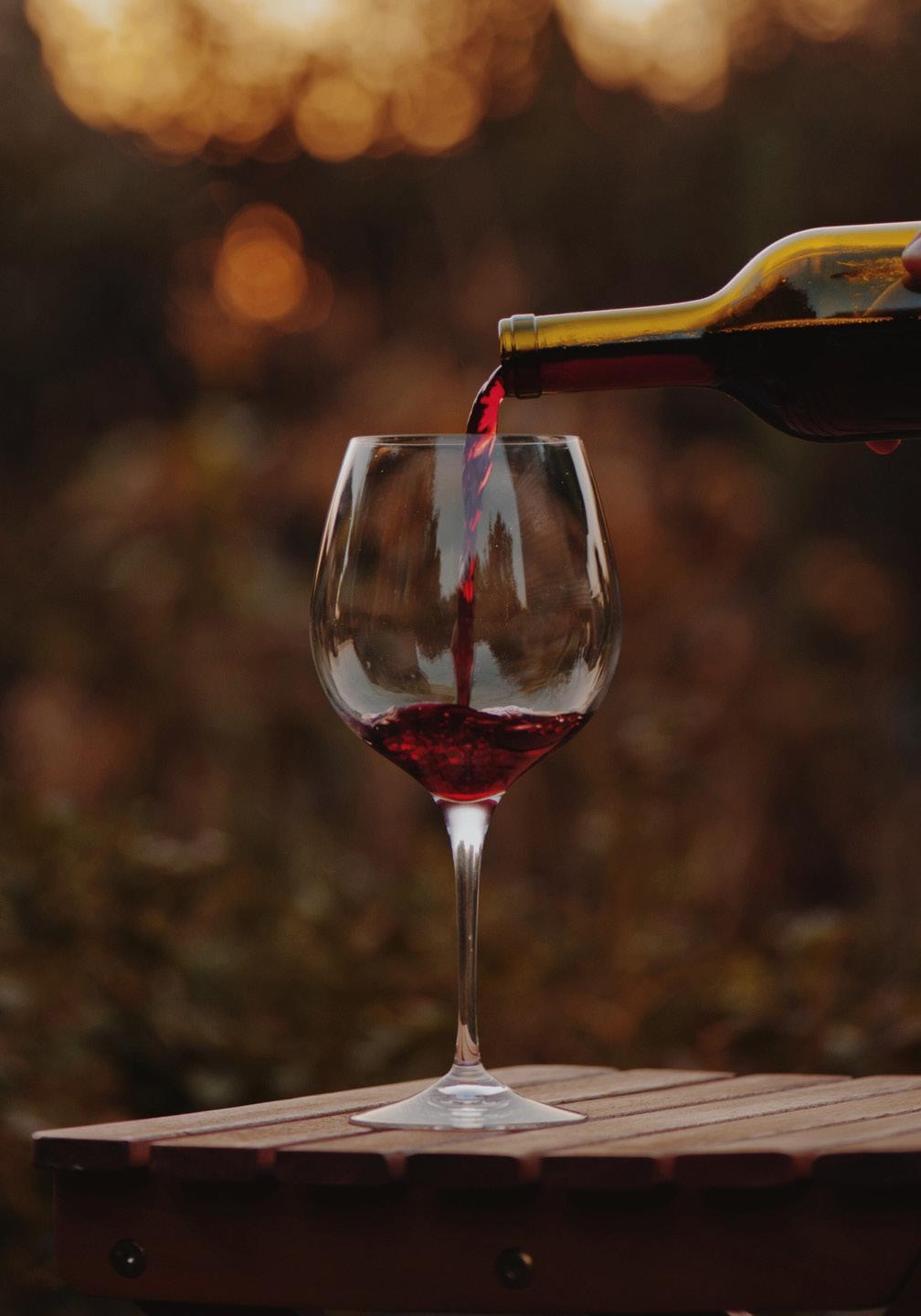 Pickled Cucumber
Pickled Cucumber
Some linger in woods. Some sit by a dirt road. Some hide among trees. Some haunt the edge of villages. Some appear abandoned but caretakers tend them. They’re seldom, if ever, used. They’re lonesome, the old churches waiting here and there. Waiting for someone. Waiting … waiting ...

For me. Perchance you.
I go to shuttered churches more so than the church I call my own. I can’t explain my reverence for churches long past their prime. Maybe the answer’s akin to these lines I wrote elsewhere: If you want peace, go to a graveyard. All those worries laid to rest. And now I write—If you want peace, comfort a lonesome church. Sit in her pew and take in all those years of song, prayer, joy, and grief.
Driving back roads one day I turned onto a dirt road. I saw an old church whose steeple leaned. I parked on a carpet of pine needles. Dust hung like smoke … the church door opened with a push and nudge of my foot. Pews, pulpit, piano, and one hymnal. That’s all. I stood at the pulpit and looked over empty pews. That’s when the old church spoke to me.
“We get lonely. Why don’t you tell people about my sisters and me?”
Like a stone in my pocket, I carried her plea a long time. When I could ignore her no longer, I decided to write about old churches for the churches’ sake.
Some wear tattered boards; some serve as trellises for Virginia creeper, and some wear curling tin combed back by winds. Rains soak carpets and quarter-sawn longleaf floors. The steeple leans on some, if it’s there at all. Windows fall asunder, and boards cling to a nail. A steel cable runs from one old church to a tree. “To keep the church from keeling over,” said a former minister. Come spring, nesting birds flit through broken windows. The congregation for some is storage—bric-a-brac, detritus, worthless things people nonetheless value. Sanctuary, oh sanctuary from where cometh your salvation?
Wander along the west branch of the Cooper River, and you’ll come across Taveau Presbyterian Church that Martha Carolina Swinton Ball Taveau had built in 1835. Upon her death in 1847, Black Methodists began worshiping in the church and did so until the Methodist Conference closed it in 1974, a run of 139 years.
Taveau, an extant rural pre-Civil War Black landmark in Berkeley County’s Sacred Corridor, stands as a historic rarity. Near historic Mepkin Abbey and Strawberry Chapel, Taveau offers an unusual example of early 19th century church architecture, with its rare air of sophistication, and it will be here a good while. July 3, 2023, Preservation South Carolina announced it had secured the purchase of the nearly 200-year-old Taveau Church in the rural Berkeley County community of Cordesville. Taveau will live on.

 New Life For A Historic Church
New Life For A Historic Church
An Integrated School, A Storehouse — A Treasure
A photo of St. Simon’s Episcopal Church in Peak crossed my desk. I could tell she had been a beauty because she’s a beauty still. Finding her wasn’t easy as her friend, Bill Segars, discovered. “Of the hundreds of church buildings I have found, none proved more difficult than St. Simon’s.”
You have to know just where and when to look or you’ll miss her. I missed her. Missed her more than once. I parked to “figure some.” Then I spotted a pillar of Peak. Dr. Carroll Pinner led me to her.
High grass flanked her. A frayed blue tarp covered the steeple. Lightning, I heard, struck it. A green, leafy gutter of vines ran along the attached parsonage-school. Vines dead and green climbed the church. Stuff hard to part with cluttered the church’s front entrance. Pray tell, what’s the story here?
First there was an African American Episcopal congregation, 1889, under Rev. G.E. Howell’s guidance. In the late 1890s, the St. Augustine’s League of New York helped the church establish a building fund. The Carpenter Gothic structure went up in 1900, as the cornerstone attests.
As Peak prospered so did St. Simon’s. As Peak’s population dwindled, attendance fell. By the 1920s regular services were a thing of the past due in part to economic collapse. In the 1920s falling cotton and tobacco prices and the boll weevil brought hard times to South Carolina earlier than elsewhere.
Time passed. In 1952 Rev. Edwin B. Clippard, rector of St. Luke’s Episcopal Church in Newberry, tried to breathe new life into St. Simon’s. Exterior and interior repairs were made, and a fresh coat of paint

blessed the structure. A new holy altar table, organ, carpet, altar cross, candlesticks, and communion linen dressed up the interior. By 1954, the church had fourteen communicants. As Segars wrote, “the written history goes cold again,” but we know that after 1954 the property reverted back to the original owners. A brother and sister inherited the church and the brother lived in the church a while. “Preacher,” folks called him.
When Preacher died, his sister, Miss Thelma, stored possessions in the church. Descendants of Preacher’s sister live in front of the church. Possessions heap up on the church’s gabled front porch.

The day I photographed the church her pale blonde-gray-dark mottled boards evoked a graying woman yet to dye her hair. Two Gothic arch windows peered east over tall grass toward the Broad River. And what did her eyes see? Her connection to a civil rights pioneer who marched on a drug store in 1960 and an astronaut who piloted space shuttles, one of which deployed the Hubble Telescope in 1990.
Astronaut Maj. Gen. Charles F. Bolden’s great grandmother, Sara Martin, taught at the St. Simon’s Episcopal Mission School, its mission to teach black children when public schools taught white children only. Nonetheless white families enrolled their children in her school, and Martin had to erect a partition to segregate the children. Wrote Historian Nancy Hayes Washington—This school may be South Carolina’s first integrated school.
A civil rights icon spent boyhood weekends close by the church. Rev. Simon P. Bouie’s great grandmother lived on River Street. Buddy Johnson, loyal friend of St. Simon’s, drove me to the Rev. Bouie’s home where the reverend told me how he and an Allen University student led a 1960 sit-in on Columbia’s Main Street.


“Five hundred to 600 of us went to Eckerd’s to ‘try out’ a sit-in. We got down there and the question was ‘who’s going in?’” Rev. Bouie and his friend went inside. Refused service, they were then arrested for trespassing. Of the iconic moment, Rev. Bouie said, “I was abused but wasn’t hurt. People called us names and spit on us.”
Rev. Bouie and his friend were convicted of trespassing, a typical charge for AfricanAmericans attempting to be served at lunch counters in the 1960s. In 1964, the U.S. Supreme Court overturned Bouie’s conviction, a landmark ruling used in other sit-in cases around the country.
Rev. Bouie remembers the church at Peak was “a community of law-abiding people who loved each other and worshiped together.” Today the old Carpenter Gothic church’s ailing. Mourning too. As my Grandmother Walker faced the inevitable,

she told me more than once that all her friends were in the ground. That’s how this old church must feel. She’s done her part though. Her halo’s spacious; within it is much—a man who touched the stars, salvation, learning, integration, freedom, and history. Why not honor her full life for that?
It now falls on others to save this place of architectural and historic magnitude. Over the years, Peak, the Peak Preservation Association led by Dr. Ben Pinner, Buddy Johnson, Walton J. McLeod, Dr. Carroll Pinner and Dinah Pinner, Peak Mayor Rev. Moses Rembert, the USC Center for Civil Rights History and Executive Director Dr. Bobby J. Donaldson, and others have aspired to save and restore the church-school. Near the Palmetto Trail as it is, the potential for visitors to this iconic church-school is high. Obstacles exist, however, and help is needed.
He that planted the ear, shall he not hear? — Psalms 94:9Lonesome holy buildings wait on people to visit them. Just a few … Taveau Church, Halfway Creek Church, Workman Methodist Church; Graham’s Methodist Church, and Friendship Baptist Church over Georgia way.
Abandoned, vacated, inactive … Just what should we call these vacant, sacred places? Hartsville’s Bill Segars, a staunch ally of old churches, considers them “lost but loved.” Whatever you call them, visit one some Sunday morning. You’ll hear no car doors slam, other than your own.
I visit lost but loved churches in South Carolina and Georgia, my province of Georgialina. My wanderings take me to churches named Dothan in Morgana, an extinct South Carolina community. Morgana, say it again. What a beautiful word. I’ve visited Barrs Chapel in Edgefield County where services take place twice a year, once in autumn and at Christmas when a candlelight service takes place. Then there is the lost but loved Trinity Episcopal Church in the 1736 Pee Dee community of Society Hill, where local caretakers hold two services a year so the public can experience the inspiration of worshiping in this 1834 edifice.
Hearing of my wandering mission retired Forester Ken Leach of Greenwood contacted me. “A guy I worked with forty years ago,” said Ken, “reflected on an old abandoned church near Newberry on Monument Road. It had an old piano in it and it was there he taught himself basic piano skills.” A good many vacated churches cling to their piano. How easy to conjure up a ranger in green and khaki sitting on a three-legged stool, notes ringing out to a congregation of cedars, birds, wasps, and mice. How surprising, though, what awaited me.
Monument Road runs into Beth Eden Road. At their juncture stands a monolith. “In memory of the following men who lost their lives as a result of a plane crash near this spot on February 5, 1943 while in the line of duty.” The inscription’s singular “plane” misleads. Two B-25 bombers, flying tight, crashed here after colliding. Two crews of seven—14 men—died.

The old church turned conservatory? Gone. Not far from the monolith I found a flattened area where broken bits of ceramic plates and old blue glass lay in thin grass. At the site’s edge sat a block of granite. I had stepped into a personal history for some, the
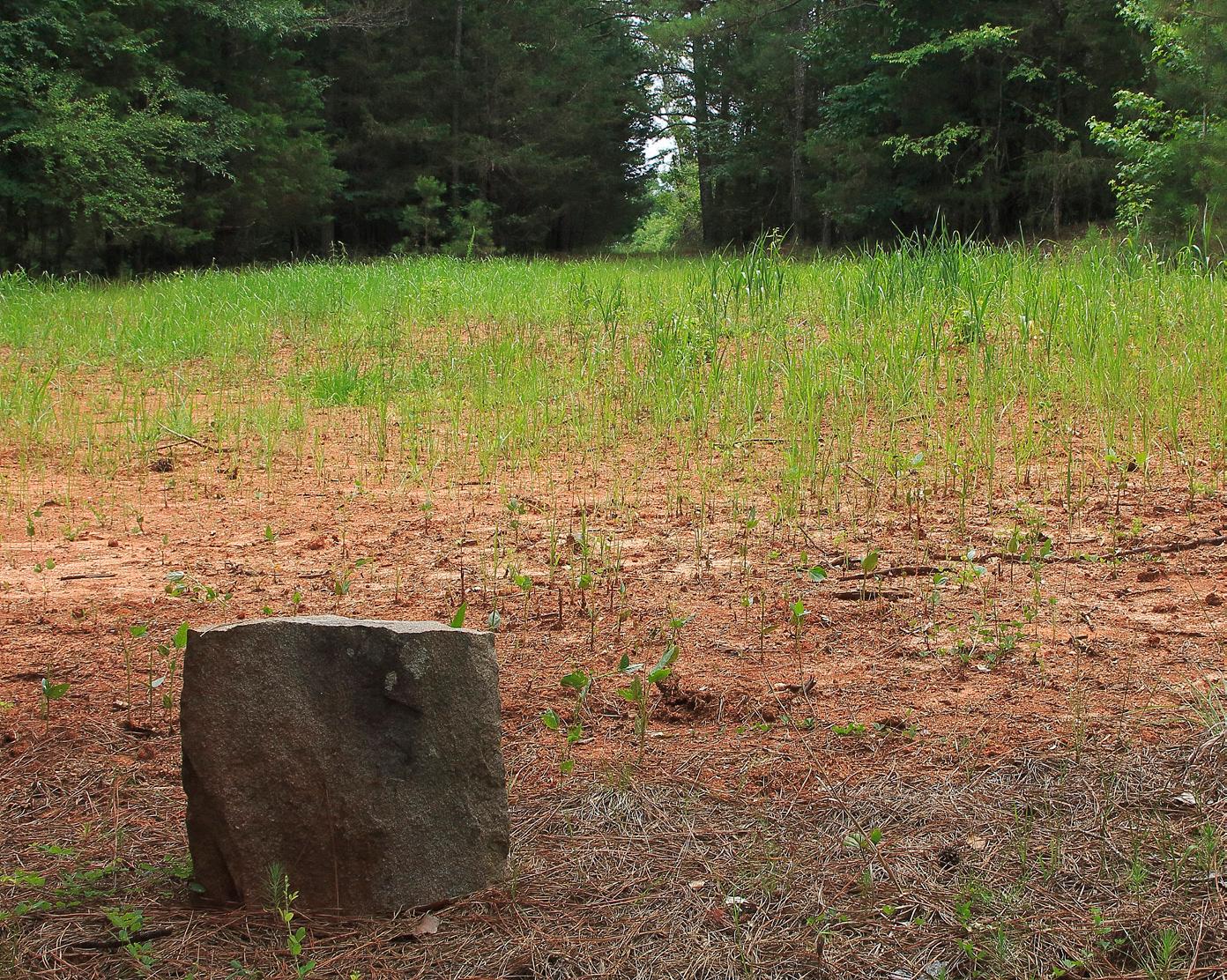
end of their church and the beginning of another one elsewhere. And I had stumbled into history—the death of World War II servicemen. I thought of piano music and the sound of crashing metal. I tried not to think of falling men. All in all, it gave me a haunting of a different kind, one I’m unaccustomed to at old chapels long left to their own devices. RIP, churches and all.
RIP indeed. Some churches do die. Things change, and a near-imperceptible exodus take its toll. Youth leave for greener pastures and the elderly die. Funds dry up. To carry on becomes impossible. I like to think that when that day of dread arrives, a congregation of three or four sings a hymn, prays, and then they shut the door. Visit St. John’s Baptist Church in Wilkes County, Georgia to see a deceased church firsthand … if you can find it. Some churches, hallelujah, get new life.
PHOTO BY BILL
SEGARSThis forlorn church in Berkeley County went up in 1941, however, the first sanctuary built here was an 1828 Methodist church of logs. The first church belonged to the Cooper River Circuit, a Methodist circuit of other congregations. Many denominations worshiped here, but now she deteriorates daily.
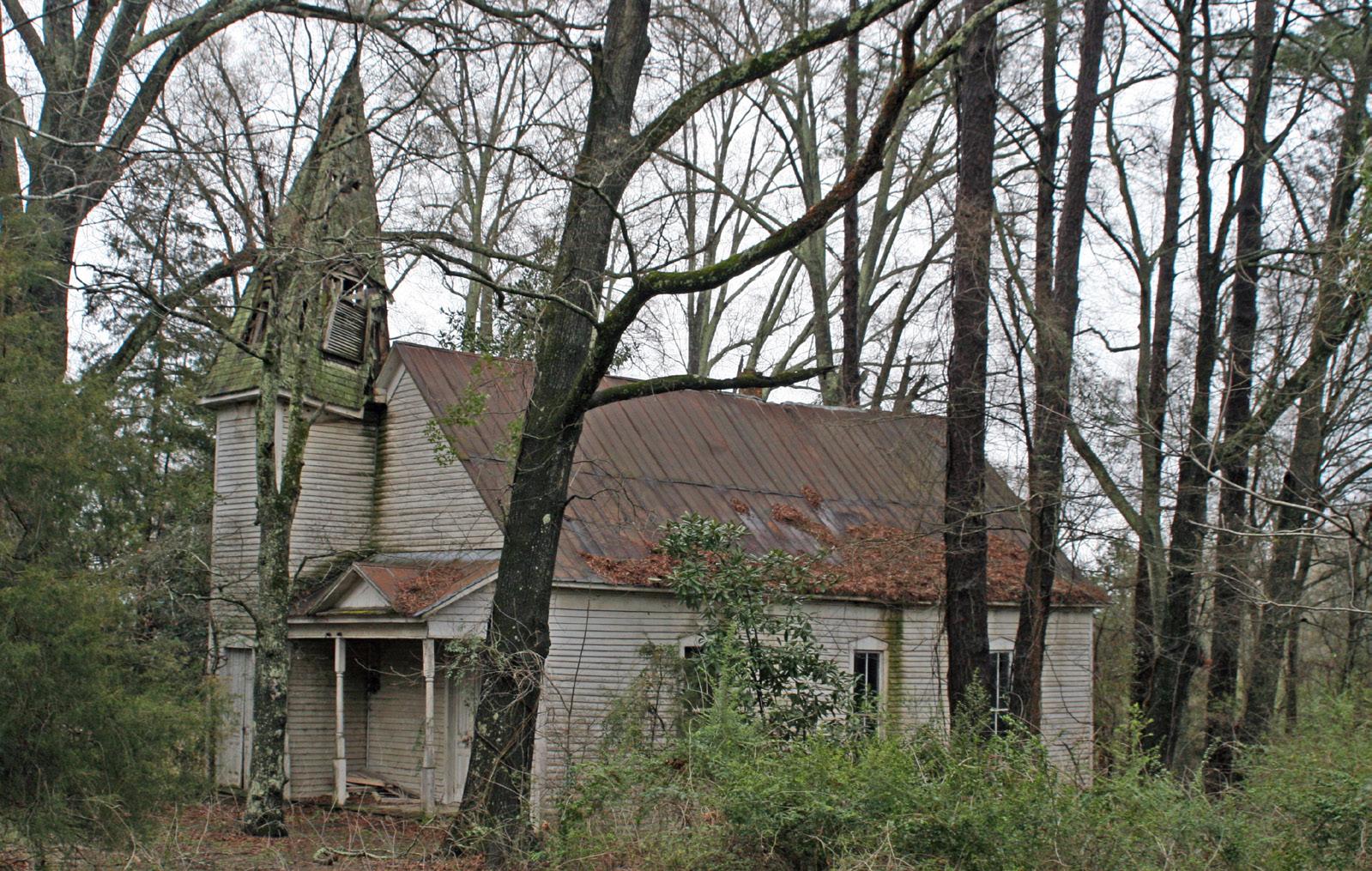


PHOTO BY TOM POLAND
She stands in the community of Workman Crossroads, named, perhaps, for the former owner of a now-closed general store at the corner of McIntosh Road and Sumter Highway in Williamsburg County. People refer to their home as Workman and sometimes, “The Corner.”
Victorian features, square wrought iron nail heads, and circular saw marks indicate this church went up late nineteenth or early twentieth century. Its name reflects, perhaps, owners of the church site or family that most comprised the congregation, possibly both. It served as Pomaria’s primary Methodist church until 1968.
This meeting house-style church stands in the Morgana community of Clarks Hill. It no longer holds services. The sanctuary dates to 1885 when Mrs. Eldred B. McLendon donated land for a Methodist church. Had it not been for the Scott family, this small church would have been lost to the forest from which it came
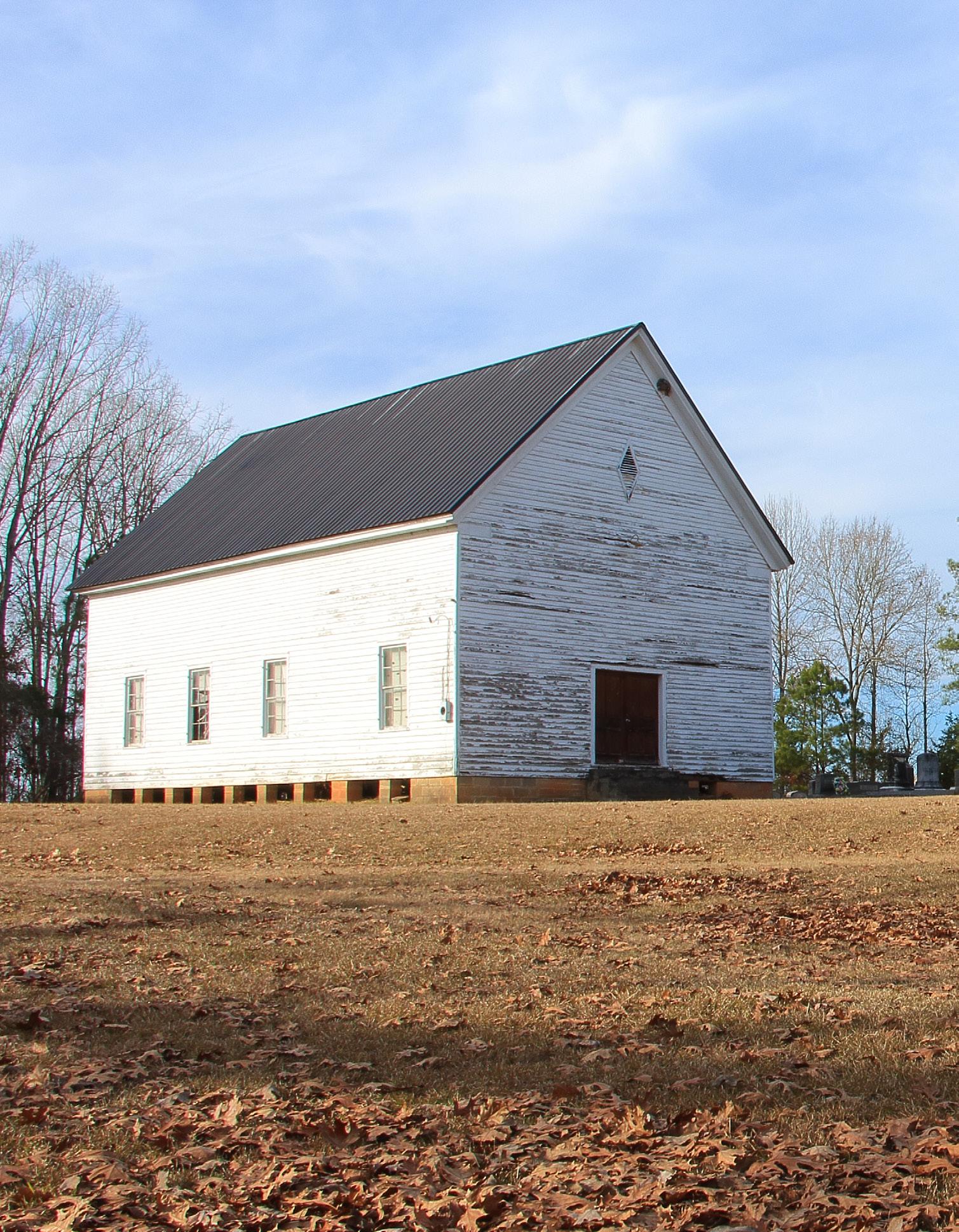


Established March 24, 1879, the sanctuary went up the following year. Originally of lap siding, vinyl covers the exterior today. Edgefield United Methodist Church maintains Barrs Chapel Methodist Church. Worship is held twice yearly, once in the fall and a candlelight service at Christmas.
 Edgefield County
PHOTO BY TOM POLAND
Dothan Methodist Church
PHOTO BY TOM POLAND
Edgefield County
PHOTO BY TOM POLAND
Dothan Methodist Church
PHOTO BY TOM POLAND
The church began as an arm of Clark’s Station Baptist January 1826. By May 7, 1831 it had 33 members, 12 of whom were black. It’s listed as “presently inactive.” The interior is in relatively good shape; someone cares for the church, grounds, and cemetery. Wilkes County, Georgia.

According to Brian Brown’s “Vanishing Georgia” this 1909 church has been referred to as Jones Chapel, because the road where it stands bears that name. Sources at Historic Rural Churches of Georgia confirmed that it was St. Johns Baptist Church. A portion of its roof is gone and its floor is caving in. Its piano hangs in there waiting for someone to play it.
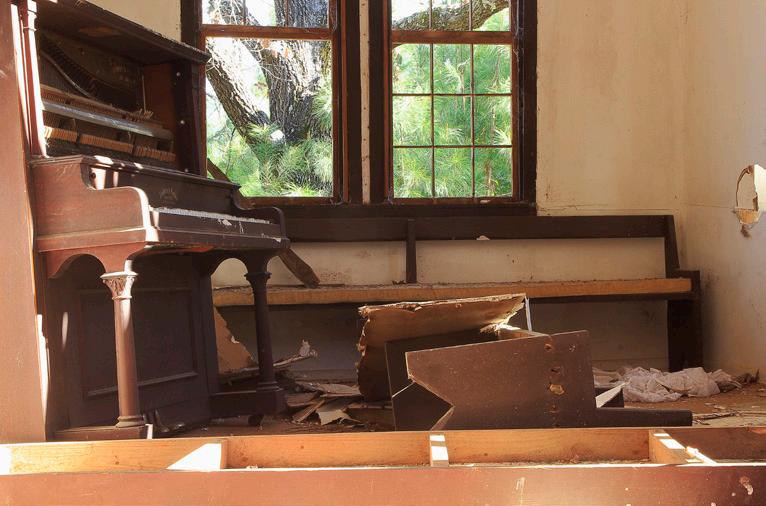

It may be futile to hope other deserving sanctuaries like Taveau gain salvation, but perhaps people can find allies and resources to save as many as possible. They’re patiently waiting for you. Find a lost but loved sanctuary. As Segars wrote “spend a few minutes with her, tell her you care; you’ll feel the benefit of your simple effort.” Remember, if you want peace, comfort a lonesome church. Sit in her pew and take in all those years of song, prayer, joy, and grief.
Empty and little used, but still standing as the song goes, sanctuaries remind us that those before us had ideals but struggled and what they left us serve as treasures of spiritual strength, architecture, race relations, and more. We just can’t stand by and do nothing, can we?
Author's Appreciation - This story would not have been possible without the help of Dr. Carroll Pinner and Dinah Pinner, Buddy Johnson, Rev. Simon Bouie, Bill Segars, Brenda Newman Bancroft, and Bill Fitzpatrick. I thank them for their help in telling the old sanctuaries’ story.
John's Baptist Church PHOTO BY TOM POLAND Friendship Baptist Church PHOTO BY TOM POLANDestled in the far northwest corner of South Carolina in Oconee County, straddling the borders with Georgia and North Carolina, you will find the Andrew Pickens Ranger District (APRD). Although the smallest of the three districts that make up Sumter National Forest, the APRD is absolutely packed full of recreational opportunities, ecological diversity, historical significance, and rugged natural beauty. Because of these qualities, the District experiences the highest visitation of any other area within Sumter National Forest. Although the spring and summer months are the most popular times to visit, autumn doesn’t lag far behind as people gravitate to the mountains for the cooler weather and fall foliage.
Because of the District’s location along the southern edge of the Appalachian Mountains and the area’s lower elevations (as compared to nearby mountains ranges like the Smokies), the peak time for viewing fall foliage often occurs in late October or early November. Although there are a handful of driving routes offering places to pull over for scenic views, such as the Falling Waters Scenic Byway (SC Highway 107), arguably

the best way to take in the beauty of the District during this time of year involves spending time outside of your vehicle.
For the visitor looking for slow-paced, relaxing experiences, the District has plenty of rewarding opportunities. For example, the Forest Service offers a number of fishing platforms located along the East Fork of the Chattooga River adjacent to the Walhalla State Fish Hatchery. If trout fishing isn’t your thing, the site offers plenty of picnic tables and a vintage Civilian Conservation Corps (CCC) picnic shelter nearby for you to enjoy. This easily accessible site also serves as the trailhead for the East Fork Trail, which, as its name implies, follows the East Fork of the Chattooga. Although you can do a quick out-and back hike along the East Fork Trail, be aware that the trail crosses into the Ellicott Rock Wilderness a short distance from the trailhead and continues on to the Chattooga Wild and Scenic River Corridor. Remember, no matter how short of a hike you plan on taking, you should always be prepared for a wilderness experience and pack what you might need in case your hike goes longer than expected.
 Words by Greg Cunningham
Words by Greg Cunningham
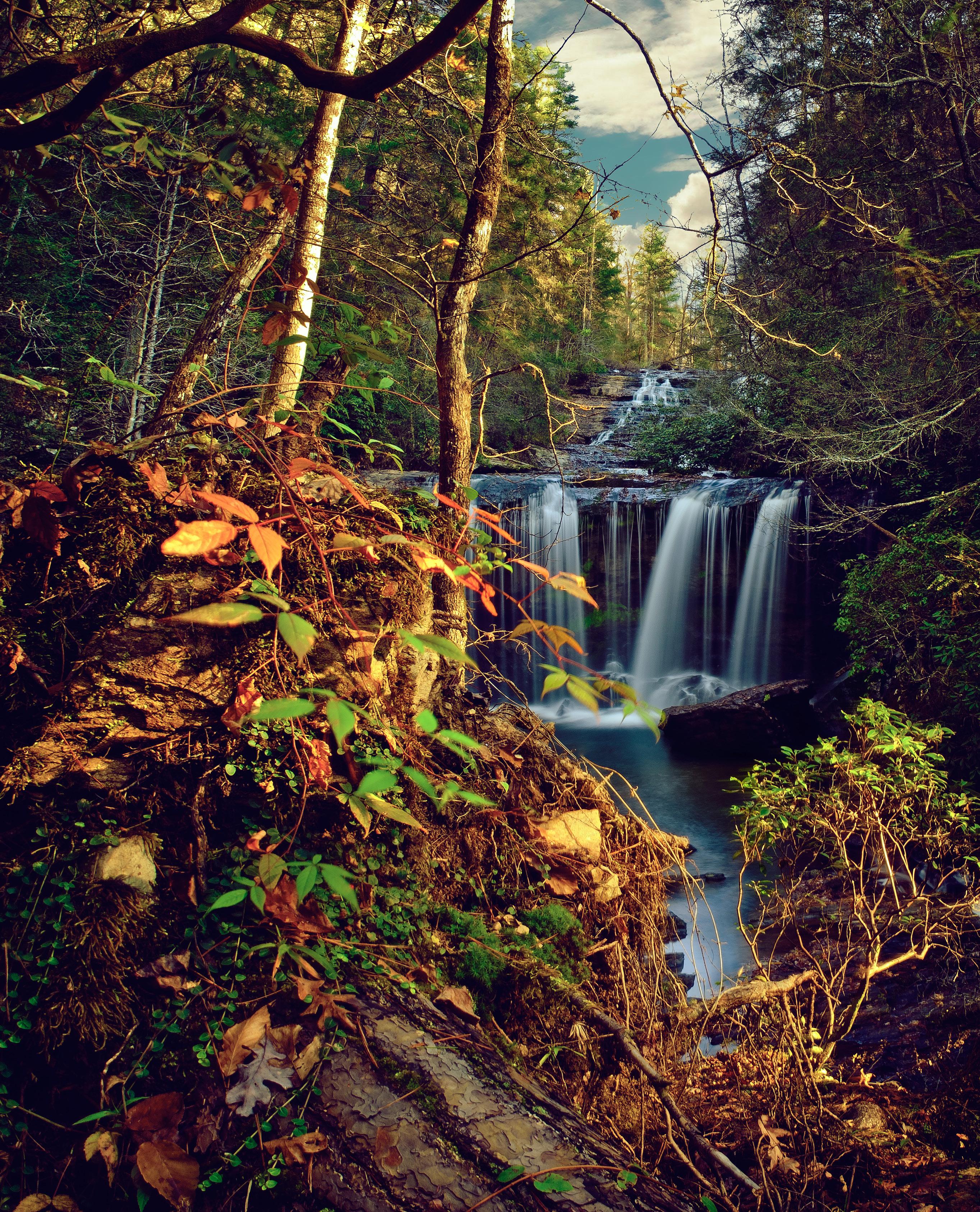


Of course, a visit to the Andrew Pickens Ranger District wouldn’t be complete without visiting at least one of the many beautiful waterfalls scattered throughout the District. Almost without exception, visiting one of the waterfalls will require at least a moderate amount of physical effort. Brasstown Falls, located about 4.5 miles off U.S. 76 near Long Creek, SC offers something for everyone. Brasstown Falls is actually a set of three waterfalls along

Brasstown Creek. The upper waterfall is the easiest to get to as it is a fairly flat walk only a few minutes from the parking area. The other two falls require going down (and back up!) a steep trail. Although not that far of a hike to the bottom waterfall, hikers have to climb down a ladder and navigate the steepest section of trail. It’s well worth the effort, but you do need to make sure you are physically able to get back up the trail (sorry, although the Forest Service has made lots of
trail improvements lately and installed viewing platforms, there are no plans for an elevator anytime soon!). Other waterfalls worth the effort include Riley Moore Falls, Yellow Branch Falls, Licklog Falls and Pigpen Falls. (Note: waterfalls on the District can be particularly busy on weekends, so consider visiting on a weekday).
Yellow Branch FallsThe Andrew Pickens Ranger District is also home to the famous Chattooga River, one of the “Seven Natural Wonders of South Carolina.” The Chattooga was designated as a Wild and Scenic River in 1974 and since has become a major draw for all sorts of outdoor enthusiasts, including white water rafters and kayakers, anglers, campers, and general sightseers. The District offers numerous access points to the Wild and Scenic River Corridor. One of the more convenient access point to get to is the located on the Georgia/South Carolina border off of U.S. Highway 76. There is a large paved parking lot and a short access trail down to Bull Sluice, arguably the most famous of the Chattooga’s rapids. There you can watch as rafters and others try their luck at navigating down the rapids. Back in 1974, to raise awareness of the Chattooga, then Georgia Governor Jimmy Carter and another individual went over Bull Sluice in an open tandem canoe. If that isn’t your cup of tea, there is a nice beach below the parking lot. Be aware that the Chattooga is “wild” and all users should be exercise extreme caution when enjoying the Chattooga River.

In addition to the natural beauty of this part of South Carolina, there are also opportunities to experience some of the area’s storied historical and cultural legacies. Located on SC Highway 28, just before crossing the Chattooga River into Georgia, you can stop and see the historic Russell Farmstead. The house was a busy Appalachian farmstead from the late 1800s into the early 1900s. the Russell Family provided overnight lodging and good homecooked meals for travelers and vacationers who flocked to the area to escape the hot South Carolina summers. During times when the nearby Chattooga River was unsafe to cross, as many as 80 guests stayed in the house at one time. Although the main house was later destroyed in a fire, visitors today can walk the grounds and see many of the original outbuildings and imagine what it must have been like “back in the day.”
Speaking of historical legacy: you may be wondering where the Andrew Pickens Ranger District gets its name. Andrew Pickens was South Carolina militia general

during the Revolutionary War. He fought at Cowpens and Ninety-Six, among other important engagements in South Carolina. He later went on to serve in the state’s General Assembly and represented South Carolina in the U.S. House of Representatives. His final home was located in Tamassee, located along the eastern edge of the District that now bears his name. The Sumter National Forest itself is named after another Revolutionary War figure, General Thomas Sumter (aka “the Fighting Gamecock”). Sumter also represented the state in both houses of Congress after the American Revolution. Down in the Lowcountry, the Francis Marion Ranger District is named after General Francis Marion (aka “the Swamp Fox”). All three of these individuals played important roles in the development of the State of South Carolina.
To learn more about the many recreational opportunities available on the Andrew Pickens Ranger District, as well as the other three districts in South Carolina, be sure to check out the Forest Service Interactive Visitor Map or visit online.
fs.usda.gov/scnfs
Forest Service Interactive Visitor Map App: fs.usda.gov/ivm
Greg Cunningham is the Recreation Program Manager for the Francis Marion and Sumter National Forests.
Gregory.Cunningham2@usda.gov

Four signers of the Declaration of Independence and why every South Carolinian should remember their names

Words by W. Thomas Smith Jr.
 Thomas Lynch Jr.
Arthur Middleton
Thomas Heyward Jr.
Edward Rutledge
Thomas Lynch Jr.
Arthur Middleton
Thomas Heyward Jr.
Edward Rutledge
Asource of great pride for all South Carolinians – actually for all citizens of the United States – should be the Palmetto State’s four signers of the Declaration of Independence. These were men who quite literally put their money where their mouths were, and I’ll explain why I say so momentarily.
FIRST: Who were the famous four? Even if we know little to nothing about them, we have all heard their names – Arthur Middleton, Edward Rutledge, Thomas Heyward Jr., and Thomas Lynch Jr. –because of the streets, plantation homes, parks, buildings, and geographic destinations across South Carolina as well as oceangoing freighters, troop transports, and warships all of which have served as their namesakes. But there is so much more beyond their names which have set the “fab four” apart from the other 56 men who penned their names – pledging their lives, fortunes, and sacred honors – to that famous founding document in the summer of 1776 (the document was approved July 4 but not signed according to most sources until August 2).
If nothing else (though there is), the four from S.C. were quite literally the youngest of all the signers: Certainly Edward Rutledge was at age 26, as was Thomas Lynch Jr. (my personal favorite of the four), also 26. Rutledge was actually younger than Lynch, but only by three months. The other two S.C. signers Thomas Heyward Jr., 30, and Arthur Middleton, 34, were also among the youngest signers of the Declaration, though Dr. Benjamin Rush of Philadelphia, 30, beat Heyward for third place by several months.


And Maryland’s Thomas Stone, 33, and Pennsylvania’s Judge (future Supreme Court Justice) James Wilson, 33, were both younger than Middleton by a year. North Carolina’s Deputy Attorney General William Hooper, also 34, was younger than Middleton, but only by nine days.
Speaking of youngest, who was the oldest of the Declaration’s signers? You likely guessed it: Philadelphia’s own Benjamin Franklin, age 70, followed by six signers in their 60’s, ten in their 50’s, twenty in their 40’s, and seventeen in their 30’s. Counting Franklin and the two 20-somethings from S.C., that’s 56. So the Declaration of Independence was indeed a young man’s document.


Back to the S.C. four: Middleton, Rutledge, Heyward, and Lynch all served in the military, which speaks to their putting their money where their mouths were. Middleton served as a rank-and-file soldier in the S.C. militia during the 1780 defense of Charleston. Rutledge also served in the S.C. militia, but as a captain of artillery. Heyward too was a captain of artillery in the S.C. militia. And like Middleton, Captains Rutledge and Heyward served and fought in the defense of Charleston. All three were captured by the British when Charleston fell (the largest mass-surrender of an American force during the war), imprisoned, and freed following a prisoner exchange in 1781, the same year Yorktown, Virginia fell to the Americans and the French. So it all evened out.
Arthur Middleton Edward Rutledge Thomas Heyward Jr. Thomas Lynch Jr.What about Lynch, my favorite: He served in both the S.C. militia and the regular army, first as a captain of infantry in the 1st S.C. (Infantry) Regiment which was adopted into the Continental Army soon after Gen. George Washington assumed overall command in 1775. Lynch’s story, however, is a bit of a tragedy.
Born August 5, 1749 at Hopsewee Plantation near present-day Georgetown, Lynch was the son of Thomas Lynch Sr., one of two delegates including Elias Horry from St. George Winyah Parish who would serve in the Royal Commons House of Assembly (predecessor assembly to S.C.’s 1st Provincial Congress), the 1st Provincial Congress (predecessor to S.C.’s General Assembly), and then the Continental Congress in Philadelphia (predecessor to the U.S. Congress in Washington, D.C.). Like his father, the younger Lynch would also serve in the 1st Provincial Congress, and when his father fell ill in 1776, Lynch Jr. was named a S.C. delegate to the Continental Congress, and traveled to Philadelphia to serve in his father’s stead.
That was March 1776. When the Declaration of Independence was finalized
in July and signed in August, a space between the signatures of Edward Rutledge and Thomas Heyward was deliberately left blank (visible today) in hopes that the ailing elder Lynch would ultimately recover and sign. He did not.
The younger Army Infantry Captain Lynch, who did in fact sign the document, was also ill, having first been stricken with a “bilious fever” (possibly malaria) while on the march with his infantry company in the summer of 1775. Soon thereafter, he learned of his father’s declining health and petitioned his commanding officer, Col. Christopher Gadsden, for leave in order to travel to Philadelphia to assist his father. Gadsden initially said “no,” but relented when he learned that the younger Lynch had been named a delegate in his father’s absence.
Following the signing in 1776, Lynch Jr. began the return trip to South Carolina with his father Lynch Sr. when the elder Lynch suffered a fatal stroke near Annapolis, Maryland in December 1776.
The younger Lynch ultimately returned home to S.C. but, struggling with his own illness, he was advised to travel to Europe
and a climate hopefully more suitable in arresting the symptoms of his particular disease. In 1779, he and wife Elizabeth set sail for the West Indies on the first leg of their journey, but the ship was reportedly lost at sea and the Lynches were never heard from again. The loss of the ship with all passengers and crew made Lynch the youngest signer of the Declaration of Independence to die. He was 30.
Fast-forward 243 years. It’s the end of July 2022, and I’m in Charleston during the final few days of the statewide SOUTH CAROLINA SEVEN (SC7) Expedition. One morning, I slipped away and drove straight up Highway 17 – along or closely paralleling the old King’s Highway – from Mount Pleasant to Georgetown in what I have since referred to as my INFANTRY
PILGRIMAGE to Lynch’s birthplace and boyhood home at Hopsewee: Beautiful plantation property, house, gardens, and historic slave quarters surrounded by a lush expanse of hardwood forest, situated on the northern banks of the North Santee River.
 Hopsewee Plantation
Hopsewee Plantation
Twelve years earlier in 2010, while serving as media relations director for the national MEDAL OF HONOR convention in Charleston, several of us attended an oyster roast at Middleton Place on the Ashley River Road about 15 miles northwest of downtown Charleston. Like so many other events during that convention, the oyster roast was a truly marvelous gathering of senior military veterans, executive-level business leaders, legislators, and well-heeled Charlestonians breaking bread and enjoying cocktails with scores of recipients of the nation’s highest award for combat valor. The immaculate grounds, beautiful gardens, and the old homeplace and outbuildings were beyond my ability to describe here.
South Carolina signer Arthur Middleton was born, June 26, 1742, at Middleton Place Plantation. He became a member of the 1st Provincial Congress; and in 1776, the same year he signed the declaration, he and attorney William Henry Drayton (yes, his family’s plantation was Drayton Hall on the Ashley River) designed the Great Seal of South Carolina.
Middleton passed away on New Year’s Day 1787, at only 44 years old, and is today buried in the family tomb on the Middleton Place property. His son Henry became governor of South Carolina, a U.S. congressman, and the U.S. minister (ambassador) to Russia.
Speaking of governors, Edward Rutledge, born Nov. 23, 1749, and again the youngest of all the 56 signers of the Declaration of Independence, became the 39th governor of S.C. on Dec. 18, 1798 and he served in this capacity until his death at age 50 on January 23, 1800. Like the other three, Rutledge also served in the 1st Provincial Congress. Interestingly, he married Henrietta Middleton, sister of fellow signer Arthur Middleton.
Rutledge is buried at Saint Philip’s Episcopal Church Cemetery, Charleston. His home, recently known as The Governor’s House Inn, served as a bed & breakfast located on the corner of Broad and Orange Streets until it was sold in 2022.



Thomas Heyward Jr. was born July 28, 1746 at the Old House Plantation (also known as the Daniel Heyward Plantation), St. Luke’s Parish near the modern-day town of Ridgeland in Jasper and Beaufort Counties. Daniel was Thomas’ father. The Thomas-Heyward House on Meeting Street in Charleston was built in 1772 by Daniel for his son Thomas, and is also known as the Heyward-Washington House because Pres. Washington stayed in the home when he passed through Charleston during his Southern Tour in 1791.
Also a former member of the 1st Provincial Congress, Heyward was only 30 years old when he signed the Declaration of Independence and he was the last signer of all the 56 delegates to pen his name to the parchment.
Heyward served as a judge before taking up arms against the British during the war. He returned to the bench after the war, retiring in 1798. He passed away on March 6, 1809 at age 62 and was buried at the cemetery on the grounds of the Old House Plantation where he was born.
These four founding fathers – Middleton, Rutledge, Heyward, and Lynch – were among South Carolina’s very best men. Remember their names.
EDITORIAL NOTE: Ranger Captain Thomas Woodward (mortally wounded near Winnsboro, S.C., in 1779) also previously served in the 1st Provincial Congress along with fellow South Carolinians Middleton and Captains Rutledge, Heyward, and Lynch. Capt. Woodward is the 5th-great grandfather of Colonel W. Thomas Smith Jr., the author of this piece.

Since my mother was beautiful from top to bottom, and loads of fun, I desperately wanted her to be a room mother when I was in the first grade. And I will never forget that look she gave me when I told her that she had been volunteered. It was my first experience with the blank stare. Eleanor lit her Kent menthol cigarette, took a long, ashy drag, and calmly replied, “Tell them that I will buy the ice.”
Oh, what a wise woman! If only I had repeated this comment when my children were in elementary school; it would have saved lots of time, confusion, and energy.
It’s just weird when a teacher who is twenty years younger than you are suddenly is in complete control of your life. They challenge your child’s stress level, self-esteem, and can totally control your home. My first experience with the tween teacher was when she asked parents to supply glue sticks. Being the older mature mother, I was experienced. Or so I thought. Well, I had a bag of glue sticks—hot glue sticks. I proudly presented the teacher with a large bag filled with glue sticks for all the children. She took one look at my bag, halfway grinned, and then, after a long chuckle, said, “I don’t think our babies will be using hot glue guns.”

“Oh, wow! I am sorry your ‘babies’ are not as advanced as my child.” “Yay, Me,” I thought. But that was just the beginning of years of not fitting in as the Southern school mom.
I studied those perfect coiffured Southern women every morning. Their favorite thing to do was exit their beautiful SUVs and walk their children into the school. What . . . for safety reasons? Oh, no. It was the morning walk down the fashion runway; I swear I saw one of those monogramed divas with matching outfits, turn and pose for the rest of us to see her and her twin spawn. The Show resembled New York City’s fashion week. And all of the other moms did the same thing. Depending on the season, everything was themed—sweaters decorated with Fall leaves and matching shoes with leaves. Christmas was the worse themed fashion statement—reindeer antlers decorated their heads, electric sweaters that blink worn over leggings with red candy canes.

Southerners historically like themes. My friend Dixie who is anti-theme moved into a new neighborhood. It was October and I knew she was in trouble when most of the folks on her street had pumpkins, corn stalks and stuffed scarecrows in their yards. I had to have the TALK.

“Dixie,” I said in a firm voice. “Your neighbors are themed and if you want to fit in, you have to do something so they will know you are one of them.”
It was a hard discussion to have since I needed to take my own advice. I’ll have to give her a shoutout, Dixie did her best to blend but it was painful.
And speaking of painful, after a period of time, your children will reminisce and make fun of you. My children love to tell the story of how Thomas and I acted and dressed when we drove them to school. Now, I can see the school from my house but when I drove the children, we were late most of time.
Thomas in his beautiful Brooks Brothers suit, would drive the children to school a half hour ahead of time, put the car in park, pray with them and concluded with, “Children be followers of God, not of man.”
Here is my children’s recount of when I drove them to school.
HOLMES: “You would yell and tell us to hurry up, we were late. Then put on your sunglass and winter coat even if it was 90 degrees and race to school drinking a cup of coffee.”
That was correct; I was trying to hide my “leave-mealone” stained pajamas with the coat.
To continue…”When we got to the school, instead of praying and sharing motivational/Jesus tidbits, you yelled, “RUN!”
CAROLINE: “Wednesdays were the worse. We were late and the school children were holding hands and praying at Meet Me at the Pole. You would also say, “Break into that circle and act like you’ve been there.” Then Caroline tearfully said, “ I hope God has mercy on our souls.”
Caroline tends to be dramatic at times. Okay, so I did not blend, fit-in, or theme. And as the years passed, I learned to quote my wonderful, beautiful fun mother, and say, “I’ll buy the ice.”
So here is a sweet tea non-themed tidbit, Be your best yourself, love others, and enjoy life. I can promise you that God will take care of the rest.

As I write we’re in the middle of a very hot summer, and, yes, I know that’s redundant. Eventually, though, autumn will arrive, probably faster than we expected. Do you anticipate the autumn season eagerly or reluctantly? It seems to be a polarizing season for some, though not as much as rooting for a team other than the one your spouse prefers.
As a kid, I looked forward to fall and cooler weather, starting back to school, new books and supplies and warmer clothes. There would be football games, the county and state fairs, Halloween and Thanksgiving, and the extremely slim hope of snow. As an adult, I look forward to the cooler temperatures and football games, and holidays, but haven’t gone to the fair since my children were young. Among the things I love is the smell of wood smoke, burning leaves, heartier foods and desserts, tailgate parties, sweaters and coats (which cover a host of sins), and coziness that comes only in the season leading up to winter. Sitting in a favorite chair, with a favorite dog, a favorite book or music, and maybe a fire, all accompanying a little elixir from Scotland or Kentucky is my idea of Valhalla.
Isn’t autumn also a time of nostalgia and looking back (just remember it isn’t healthful to look backward too much)? I hated raking leaves when I was young, but daddy wasn’t concerned with whether I liked it or not. And, to be honest, I enjoyed being outdoors with him. He’d hang a small radio from the branch of one of the dogwoods and we’d listen to a game, or if there wasn’t a game, he’d put the radio on AM which he thought had music more to the liking of an adolescent. It’s an extraordinary man who can make unpleasant chores a source of happy memories. In those days we were allowed to burn leaves, and there’s little better than that smell as the day comes to a close; dusk is the time of day the Scots say we can more easily see the face of God. In our backyard, we had a large fireplace built by my granddaddy decades earlier (big enough to roast a pig), and being around it in the evening was wonderful. There also were smores, though we had two types (see below).
Let me recommend using the beginning of cooler weather as a starting point for a project you’ve delayed, or to read some books you’ve had on the bedside table collecting dust. Get involved with some school projects, even if your children are grown and have children of their own. Schools today crave
having adults and older folks get involved with the kids, and the kids love hearing our stories. Like me, you may enjoy journaling, and I find I write far more often in fall than any other time. I also write more notes and letters to folks, whether via snail mail or e-mail, and maybe you’ll enjoy writing some shutins or folks so they get something in their mailbox other than bills and ads. And even the worst weather can’t dappen a tailgate party with old classmates and friends. If you’re fortunate enough to have a convertible or motorcycle, or just a bike (with or without a banana seat), ride out, feel the wind in your hair and your cares disappear. Dig up the leggy impatiens for your elderly mother and replace them with pansies or another flower that doesn’t mind cold weather. Take down the hummingbird feeders and fill the regular feeders and bird baths. Make hot chocolate for your children, grandchildren, or nieces and nephews—or just yourself. Make the abovementioned smores and you’ll be the most popular dad, granddad, or uncle.
Don’t forget the great outdoors in the fall. All over the south are woods, waterfalls, hiking paths, bridle paths, bicycle paths, parks galore; there are the last of the farmers’ markets and food stalls, and every sort of festival you can imagine. Take advantage of all of them. Learn some of the recipes and traditions you’ve enjoyed all your life, but which were carried on by older relatives; if you don’t, they may be forgotten. Learn to make the harvest pie, apple
pie, custard pie, pound cake, hot toddy, or whatever you’ve enjoyed without thinking much about how they magically appeared. And learn (write or record them) the stories from the older folks who may not be around another hundred years to share them.


Why learn these things? Because one thing fall calls to our attention is that time is fleeting. We won’t always have our older loved ones. There will be different, but equally special, people around the Thanksgiving table. Old traditions fade and new ones begin—it’s that clichéd but true circle of life. Enjoy it while you can. And enjoy another messages fall gives us: don’t count me out, there’s still a great deal of beauty to behold, gorgeous colors in the trees, adventures to take, and calmness to enjoy. Never count me out, because I’m only going to enter into nap time and I plan to spring back in fine form.
I promised you more about smores. Everyone knows the ingredients: graham crackers, chocolate, and roasted marshmallows. Our daddy, however, had his own version. He used saltines instead of graham crackers, and spread a little peanut butter on them, then the chocolate and roasted marshmallows. You’ll be delighted with the salty-sweetness of it, and if you don’t like the salt, put a little peanut butter on the graham crackers.

The air is cooler, the leaves are slowly turning, and festivals are popping up everywhere. Oh, and the pumpkins!!!

PUMPKINS!!! Although people nowadays usher in fall with “pumpkin spice lattes”, this fruit (yes, it’s a fruit), has been at staple for food and décor for quite some time.
It is believed that pumpkins originated in North America, with seeds found in Mexico dating back to 7000 B.C. Native American Indians used pumpkins in their diets, roasted the seeds over open fire, and dried strips of pumpkin to weave into mats. When the pilgrims arrived, they learned from the Indians and the pumpkin soon became a staple in their diets, using them in everything from desserts to stews and soups. The first version of pumpkin pie surfaced when colonists would simply slice off the pumpkin top, remove the seeds, and fill it with milk, spices, and honey. They would then bake it over a fire. Yum!
Pumpkins are also easy to decorate with and can be utilized in a variety of ways, both indoors and outdoors. So, slice, dice, bake, and decorate your hearts out. It’s fall y’all!
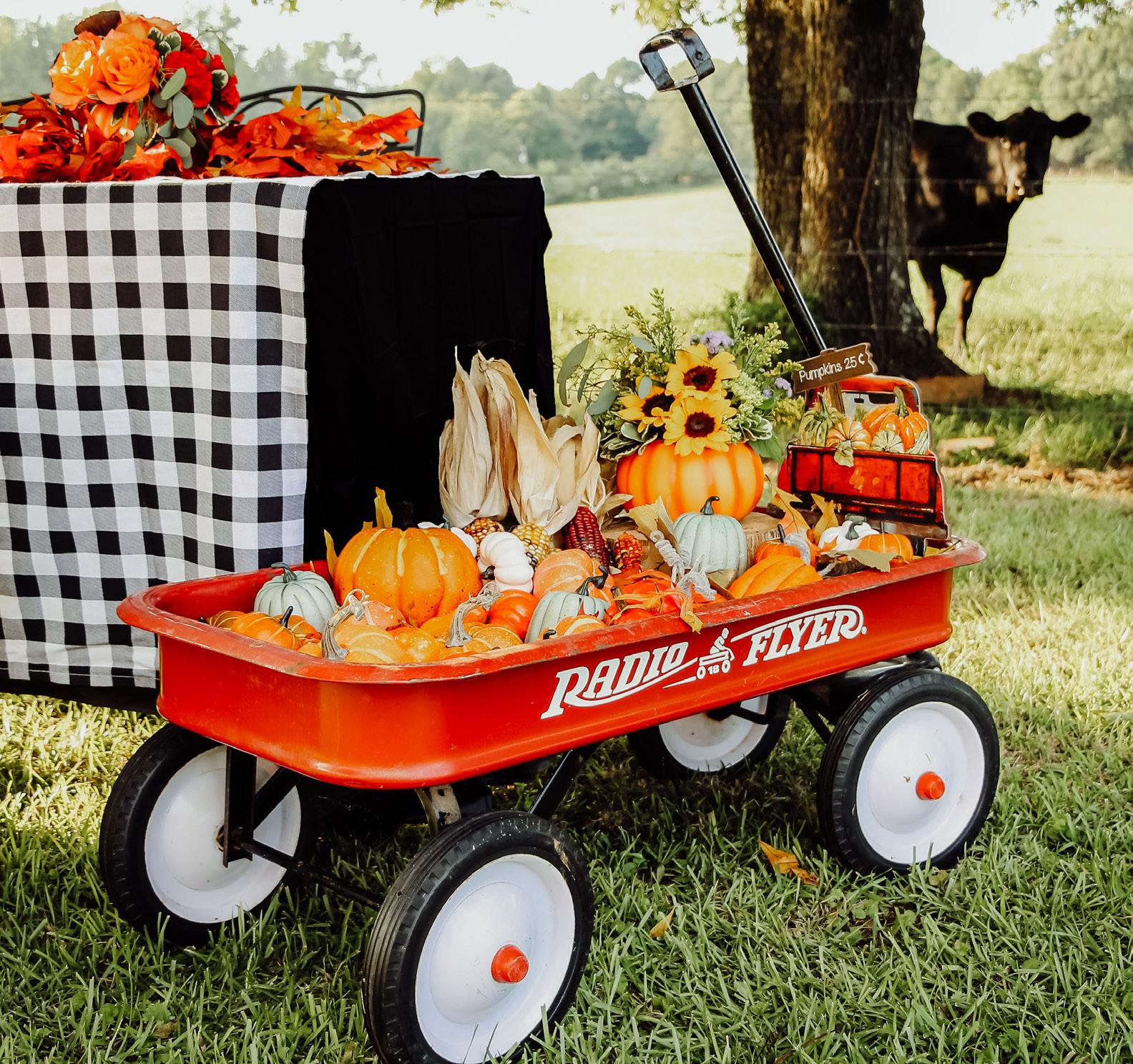 Words by Patty Bennett / Photos by Niki Mize
Words by Patty Bennett / Photos by Niki Mize



 Words by Abbey Crocker
Words by Abbey Crocker
These ideas for “30 days of thankfulness” are meant to be suggestions that allow you to indulge yourself in the simple things that may be taken for granted in the hurriedness of life. Allow yourself to focus on the principle of the idea or activity and use the awareness to be thankful of the small things in life. Use these suggestions along with the things you’re most thankful for to take full advantage of this thanksgiving season.
1. Be thankful for small, everyday gestures
2. Remember special memories
3. Enjoy your favorite time of the day
4. Go to your favorite place to relax and get cozy
5. Savor your favorite rich food
6. Keep in mind someone that you admire
7. Remember the love surrounding you, appreciate kindness from strangers
8. Be thankful for your health and the health of family members



9. Appreciate humor
10. Take today to learn something new
11. Celebrate your freedom
12. Bring a smile to the face of another
13. Remember special family traditions
14. Cheer on others for their achievements
15. Be sure to notice and appreciate your favorite form of art
16. Reminisce on former struggles that have made you stronger
17. Spend the day doing your favorite hobby
18. Enjoy your favorite place in your home
19. Focus on replacing complaints with blessings
20. Be an active listener
21. Thank an inspirational family member
22. Think of the ones who are working or away from their families this Holiday
23. Remember someone who has made a positive difference in your life, tell them how they have affected you
24. Take a day trip with your closest family/friends
25. Indulge in one of your favorite luxuries
26. Allow your actions to show selflessness
27. Focus on small, everyday items that you often take for granted
28. Give whole-hearted compliments
29. Be a good friend to those around you
30. Reflect on all of the things you’ve paid special attention to this month.










Gullah Geechee people are direct descendants of Africans brought to the United States and enslaved for generations. Their diverse African Roots and enslavement on isolated islands created a unique culture that is embodied and displayed through cuisine, music, and performing arts, language and oral traditions, crafts and religion and spirituality.




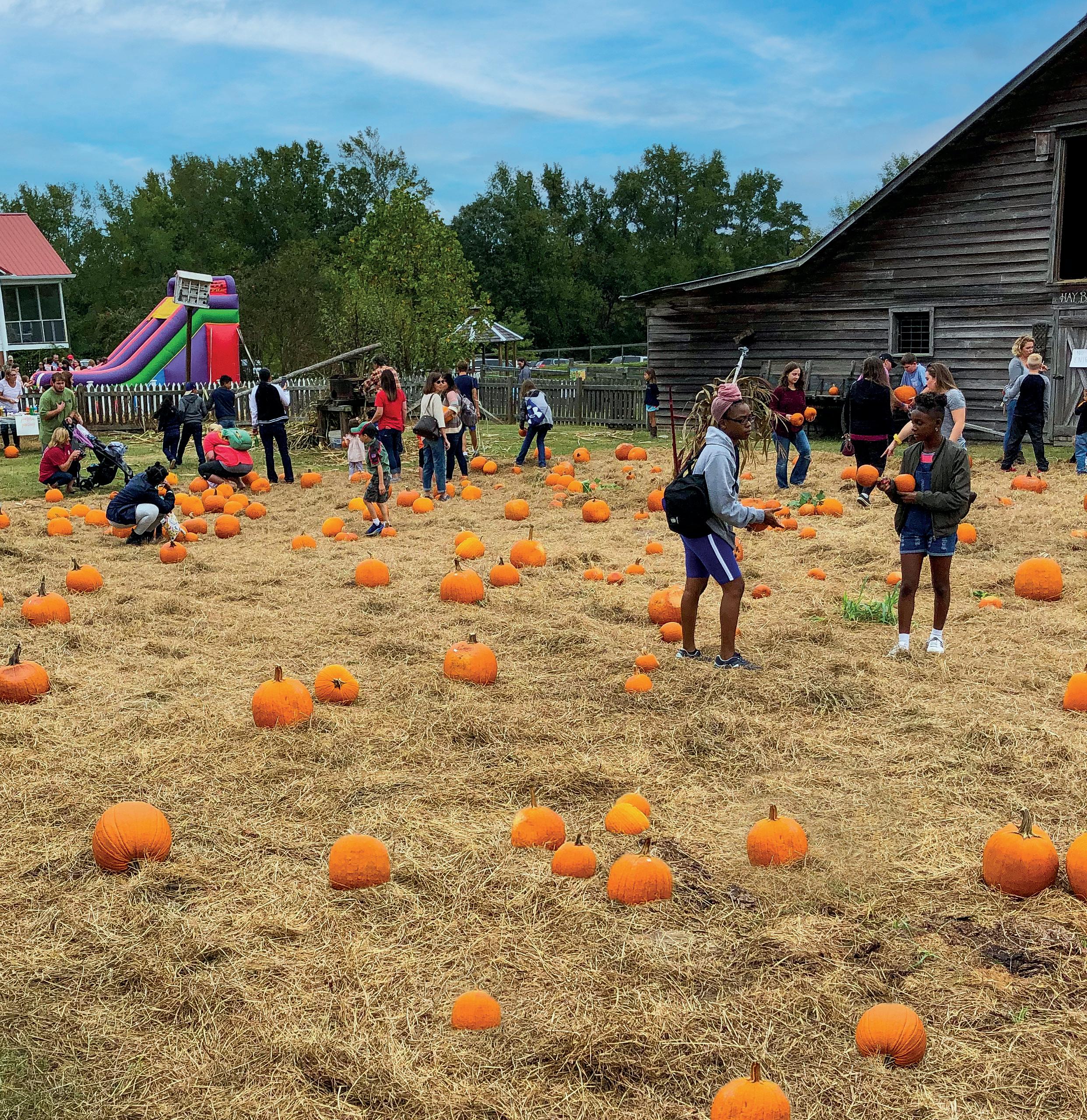



There's something magical about cooking over a campfire—its flickering flames, the mesmerizing scent of wood smoke, and the sense of camaraderie it brings among friends and family. Whether you're a seasoned camper or a newbie explorer, campfire cooking offers a unique opportunity to create delicious, rustic dishes that embody the spirit of the great outdoors. So, stoke the fire, gather 'round, and let's embark on a culinary adventure with these mouthwatering campfire recipes that are sure to make your wilderness experience unforgettable!
Ingredients:
Salmon fillet
Lemon slices
Fresh dill (or your favorite herbs)
Salt & Pepper to taste
Olive oil
Instructions:
Lay out a large piece of heavy-duty aluminum foil.
Place the salmon fillet on the foil and season with salt and pepper.
Drizzle with olive oil and top with lemon slices and fresh dill.
Wrap the foil tightly around the salmon to create a packet.
Cook the packet on the campfire grate or hot coals for about 8-10 minutes until the salmon is cooked through.

Unwrap the foil packet, and savor the delicate flavors of perfectly cooked salmon infused with zesty lemon and aromatic herbs.
Ingredients:
Sliced bread
Butter
Sliced cheese (cheddar, Swiss, or your favorite)
Instructions:
Butter one side of each slice of bread. Place a slice of cheese between two slices of bread (buttered side out).
Wrap the sandwich in aluminum foil. Place the foil-wrapped sandwich on the campfire grate or on hot coals for 3-5 minutes on each side until the bread is golden and the cheese is melted.
Unwrap and enjoy a gooey, toasted grilled cheese in the great outdoors!

Ingredients:
Assorted vegetables (bell peppers, cherry tomatoes, zucchini, onions, etc.)
Olive oil
Salt & pepper to taste
Wooden skewers (soaked in water for at least 30 minutes to prevent burning)
Instructions:
Prepare the vegetables by cutting them into bite-sized pieces.
Thread the vegetables onto the soaked wooden skewers, alternating colors and varieties for a vibrant presentation.
Drizzle olive oil over the skewers and season with salt and pepper.
Place the skewers on the campfire
grate and cook for 8-10 minutes, turning occasionally, until the veggies are tender and slightly charred.
Indulge in the wholesome goodness of these flavorful campfire veggie skewers, bursting with the essence of the wilderness.

Remember to be cautious while cooking over a campfire and follow all safety guidelines. Enjoy the warmth of the flames, the delicious aroma of the food, and the joy of sharing delightful meals with your fellow adventurers under the stars. Happy campfire cooking.

Ingredients:
2 tablespoons olive oil
2 boneless, skinless chicken breasts, cut into strips
1 red bell pepper, sliced
1 green bell pepper, sliced
1 onion, sliced
2 cloves garlic, minced
2 tablespoons fajita seasoning
Tortillas, for serving
Optional toppings: sour cream, salsa, guacamole, shredded cheese
Instructions:
Heat the olive oil in a cast iron skillet over the campfire.
Add the chicken strips and cook until browned.
Add the bell peppers, onion, and garlic and cook until the vegetables are soft.
Stir in the fajita seasoning and cook for another minute.
Serve the chicken and vegetables in warm tortillas with optional toppings. Enjoy!
Hiking is a wonderful outdoor activity that provides many physical and mental health benefits, and the South is full of amazing places to hike and explore. Whether you are going for a day hike or a multi-day trek, it is important to pack enough food and snacks to keep you energized and satisfied throughout the journey. Here are some recipes that are easy to make, portable, and will provide the energy you need to conquer the trail.

Staying fueled on healthy proteins and carbohydrates while hiking is essential for several reasons. First, hiking can be physically demanding, and it is important to have enough energy to keep going. Proteins and carbohydrates are both important sources of energy that will help you maintain your strength and endurance on the trail. Second, hiking can also be mentally draining, and consuming healthy foods can help keep you focused and alert. Proteins help to build and repair muscles while carbohydrates provide the body with the energy it needs to function.
Here are some recipes that are easy to make, portable, and will provide the energy you need to conquer the trail!


Ingredients:
1 cup oats
1/3 cup almond butter
1/2 cup ground flaxseed
2 tablespoons honey
1/2 teaspoon vanilla extract
1/2 teaspoon ground cinnamon
1/4 cup dark chocolate chips
Instructions:
In a large bowl, mix together the oats, almond butter, flaxseed, honey, vanilla extract, and cinnamon.
Form the mixture into 1-inch balls and place them on a lined baking sheet. Place the baking sheet in the freezer for 15 minutes
Remove from the freezer and roll each ball in the dark chocolate chips.

Return to the freezer for an additional 15 minutes.
Store in an airtight container for the hike.
Ingredients:
2 whole wheat wraps
4 ounces grilled chicken, diced
1/2 cup spinach
1/4 cup diced tomatoes
1/4 cup crumbled feta cheese
Instructions:
Heat a skillet over medium heat.
Place one wrap in the skillet and cook for 1-2 minutes, until lightly toasted.
Flip the wrap over and sprinkle the chicken, spinach, tomatoes, and feta cheese evenly over the wrap.

Fold the wrap in half, pressing down lightly to seal the edges.
Cook for an additional 1-2 minutes, until the wrap is golden brown.
Remove from the skillet and repeat steps 2-5 with the second wrap.
Chill in the refrigerator overnight before packing for the hike.
Salad
Ingredients:
1 cup quinoa, cooked

1/2 cup dried cranberries
1/2 cup chopped walnuts
1/4 cup chopped red onion
2 tbsp. lemon juice
2 tbsp. ectra-virgin olive oil
Salt & Pepper to taste
Instructions:
Mix all ingredients together in a bowl. Chill in refrigerator overnight.
Store and carry in airtight container for the hike.

Ingredients:
Whole grain wrap
Hummus

Sliced cucumber
Sliced red bell pepper
Thinly sliced carrot
Spinach leaves
Salt and pepper to taste
Instructions:
Spread hummus on wrap, layer veggies and spinach on top. Roll up, slice, and serve.
WordsbyYuka Greer / Knowledge byMayumiCorron

he memory of my initial encounter with cilantro remains vivid, a recollection from my early twenties. It was during a visit to Bangkok, Thailand, where my cousin and her family resided as expatriates. The influence of cilantro, known as "pak chee" in Thailand, was profoundly evident in her culinary practices. It seemed as though cilantro found its way into every dish imaginable, spanning not only traditional Thai cuisine but even making its mark in unexpected places like Japanese miso soup. While I've always prided myself on my willingness to explore new flavors, this fusion of tastes proved to be a challenging one for me to embrace. My relationship with pak chee was fleeting, cut short by this unconventional pairing, until...
Fast forward to the present, in the United States. Cilantro has become a staple in my refrigerator, an indispensable ingredient in my culinary endeavors. It finds its place in an array of dishes, from the zesty salsa and vibrant chimichurri of Latino cuisine to the vibrant Thai flavors and even as a refreshing salad topping. I've come a long way from my previous encounter, and who knows, perhaps one day I'll summon the courage to revisit that memory by topping my miso soup with a sprinkle of cilantro.
We hope you enjoy these cilantro inspired recipes by our healthy-eating expert, and my dear friend, Mayumi.
Cilantro is one of the oldest herbs in the world. Back in 1500 BC, ancient Egyptians used cilantro for both culinary and medical purposes.


Ancient Greece, Rome – used as a medicinal herb for headaches, vertigoes, and arthritis
Ancient India – used as a preservative for meat, a spice and as a sedative
China – used as a raw medicine for digestive problems
Japan – some documents from the Heian era (794-1185) mention cilantro
Cilantro contains well-balanced vitamins B1, B2, C and E. It is very rich especially in beta-carotene, an antioxidant that protests aging.
• Promotes digestion. Consuming cilantro leaves with a meal aids efficient digestion and eases
stomach ailments.
• Increases appetite.
• Promotes diaphoretic effect
• Stimulates blood circulation
• Detoxing. Gets rid of harmful toxins out of the body.
This simple recipe is packed with flavor emerging from this simple marriage between earthy cilantro and soy sauce. You can use this sauce on any protein: chicken, fish, lamb (pictured), etc.

INGREDIENTS (for2servings)
2 tablespoons cilantro, chopped


2 tablespoons oil (grapeseed oil or olive oil)
¼ teaspoon salt
2 teaspoons soy sauce
Optional: chili flakes, crushed
Mix all ingredients.
Rest at least 1 hour or overnight to add more flavor
Keeps well in a refrigerator for about 3 days.
Ingredients (for10-12crepes)
2 eggs
1 tablespoon sugar
2 pinches salt
1 cup flour, sifted
1 cup milk
Cilantro
Oil for greasing a pan
Add milk and cilantro into a food processor. Process until cilantro is finely chopped.


In a bowl, add the eggs, sugar, and salt. Whisk the ingredients well. Add the flour and mix with a whisk. Gradually add the cilantro-milk and mix all the ingredients in the bowl. Cool the batter in a refrigerator for at least 1 hour.
Heat a lightly oiled 8-inch frying pan over a medium heat. Pour a ladleful batter into the pan, while tilting and swirling the pan to coat the bottom with the batter. Cook at a low heat for 1.5 minute on one side and one minute on the other side until lightly brown.

Listen closely as the waters of the Pee Dee and Lynches River whisper stories of swampy secrets, colonial rice fields and routes of freedom Retracing the past from historic trade routes to the island hideout of the Revolutionary War's Swamp Fox, your outdoor adventure becomes a history lesson you'll never read in a book.

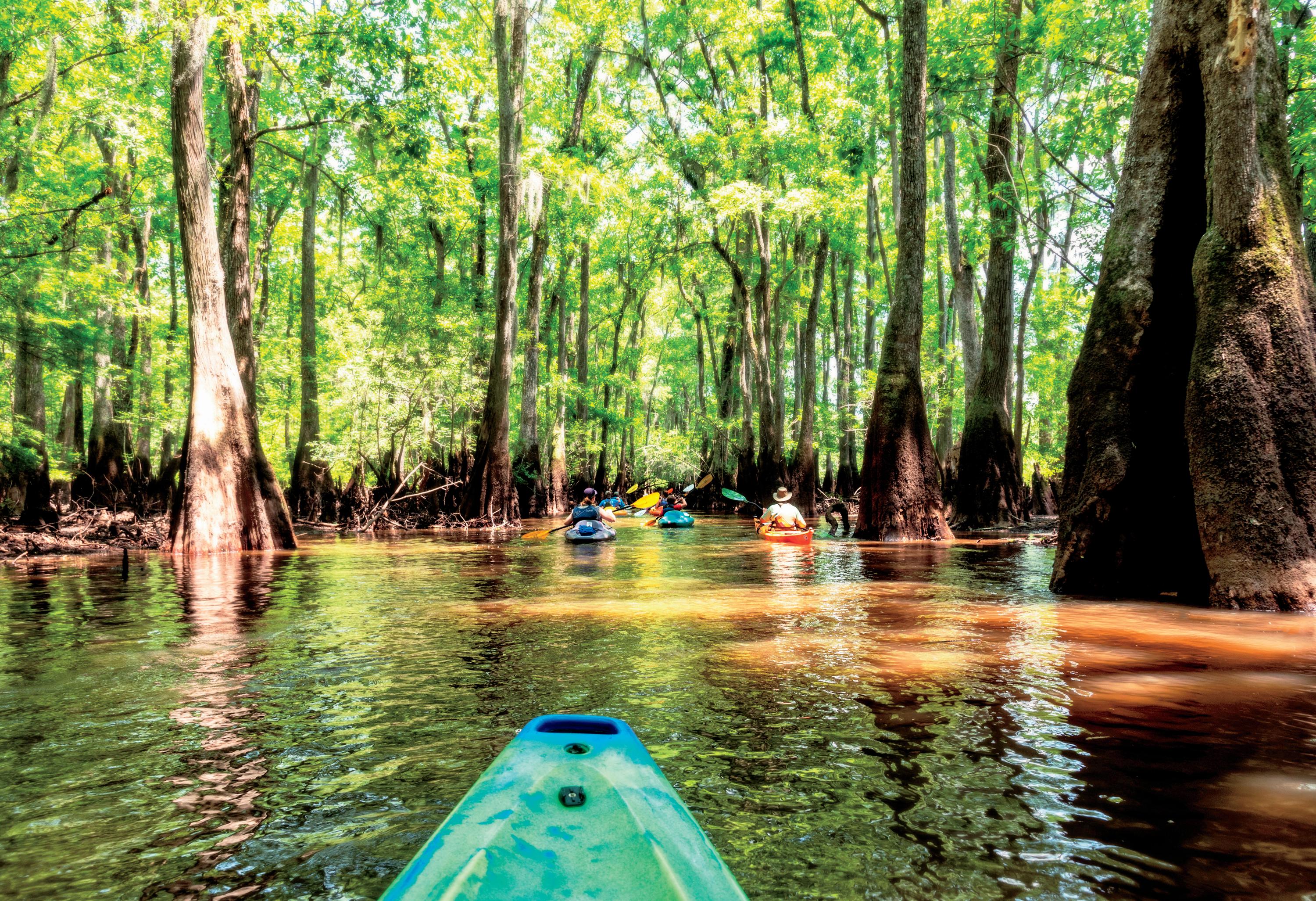
Kayaking tours can be great for a group! No matter the skill level, from first timers to experienced paddlers, getting on the river with your group can be thrilling. Team building for your work team or a friends weekend, either is perfect to get out on the river

Accessible only by water, this primitive campsite is perfect for those who are looking for peace and quiet
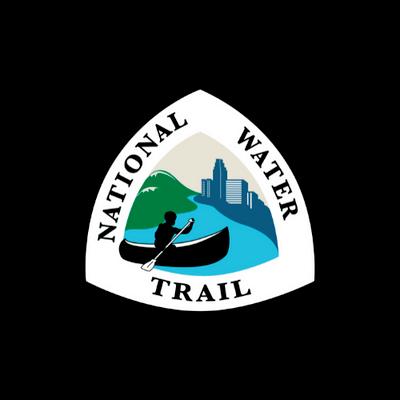
The 15'x15' screened open air room provides a sheltered sleeping area along Lynches River. A firepit is available for cooking and roasting marshmalllows.

Located in the heart of Upstate South Carolina, is Lake Hartwell, a vast reservoir spanning over 56,000 acres, surrounded by the foothills of the majestic Blue Ridge Mountains. With an abundance of wildlife and scenic beauty, it’s no secret why this lake is a popular destination for anglers of all skill levels.

Lake Hartwell boasts a diverse range of fish species, including largemouth and striped bass, crappie, catfish, and bream. The quality and size of the fish attract many seasoned anglers for tournaments like the Bassmaster Classic, which was held on Lake Hartwell in 2022. These events contribute to the area's reputation as a popular fishing destination and provide opportunities for anglers to test their skills against others. Due to the mild climate of the Upstate, fishing is welcome year-round, with each season offering a unique experience for anglers.

The lake has several public access points, marinas, and boat ramps, making it convenient for anglers to launch their boats and reach their favorite fishing spots easily. For those unfamiliar with Lake Hartwell and its surrounding area, there are many experienced fishing guides and professional services available to elevate your fishing experience.

If you are looking to get off the boat and into some waders, journey a few miles north of Lake Hartwell into the Chattooga and Chauga Rivers. Located in Mountain Rest is Chattooga River Fly Shop, a full-service fly shop with a variety of gear and knowledgeable guides. Travelers can book a full or half-day guided wade trip on either river and experience the best fly fishing nature can provide in the heart of the mountains.


Lake Hartwell Country’s Freshwater Species
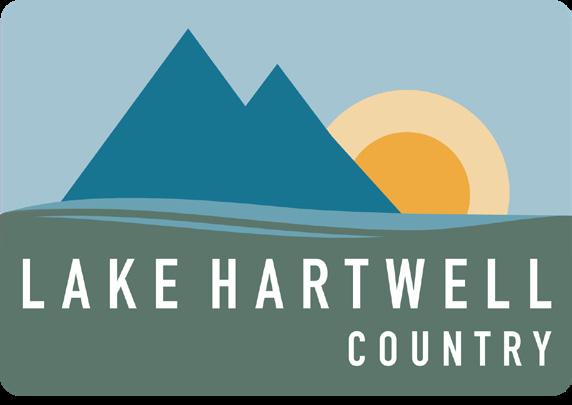
RAINBOW TROUT
BROOK TROUT
BROWN TROUT
STRIPED BASS
HYBRID BASS
LARGEMOUTH BASS
REDEYE BASS
BLACK CRAPPIE
REDBREAST SUNFISH CHANNEL CATFISH
For more information please visit www.LakeHartwellCountry.com.
AuthentiCITY Brand Strategies is helping communities, businesses, and organizations tell their authentic stories by designing market strategies, messaging, and visual assets that cover all touchpoints of their brand.
A good brand is nothing more than a well-defined story.
— Libby ImbodyFor communities, towns, cities, businesses, or organizations to grow and thrive, they must be able to communicate their attractions, heritage, products, or services in an authentic and engaging way. This is especially important for small towns and communities that are working to grow their economies. Small towns or communities are either growing or dying. Without on-going economic development, they can easily stagnate and begin the spiral downward to becoming nothing more than a drive-thru of vacant buildings and empty storefronts.
Libby Imbody, artist, graphic designer, and entrepreneur, has a successful track record of creating strong branding and messaging for a wide array of businesses and communities. In addition to her own skills, Imbody is adept at bringing together other professionals such as city planners, developers, and strategists to help a community to plan for, create and manage growth while sharing their unique stories.
 Photo by Kelly Towe
Photo by Kelly Towe

“A successful branding strategy is more than a new logo,” says Imbody, “it serves as a guide from which a community will base their marketing, promotion, and economic development to tell the town’s authentic story.” “It is important to share why your town is a desirable destination for potential businesses, tourists, or residents. You want them to see the benefit(s) of choosing your community for their investment, visit or home.”




Smaller towns and cities often have economic development ideas but limited resources for creating the kind of brand strategies necessary to achieve their goals. It is far more efficient and cost-effective to bring in a consulting firm like AuthentiCity. The consultants at AuthentiCity do the deep dive into branding identification, designing of logos, marketing, and messaging strategies. Communities can select a few services or get a proposal for everything from a new logo to strategic planning sessions to annual retreats for civic leaders and community stakeholders.



Imbody has been helping businesses with branding, marketing, and graphic design since graduating from SCAD (School of Art & Design), located in Savannah, GA. She has worked with large organizations like Universal Studios’ theme park and Hard Rock Cafe in Florida to small towns like Westminster, SC.
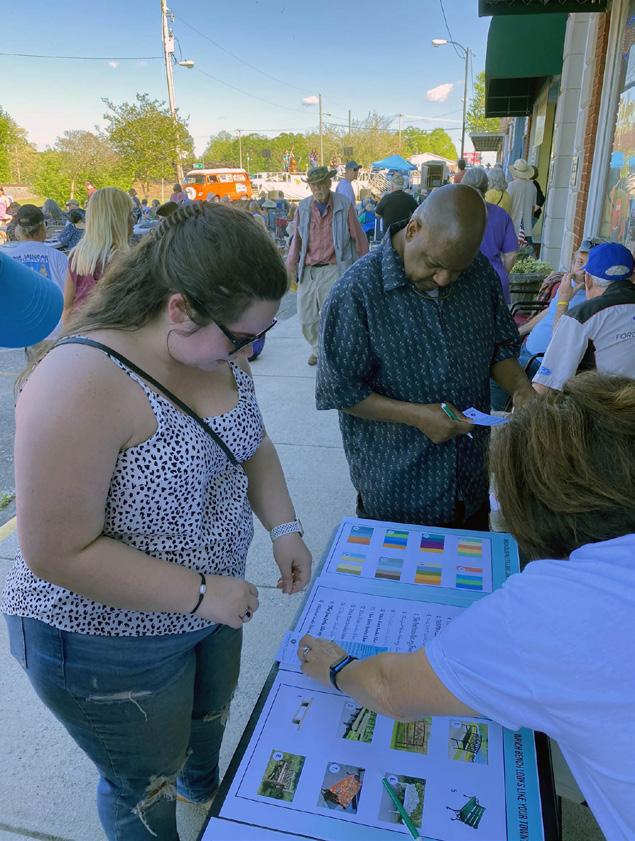





“More and more, I discover that people are searching for the small town or community they want to call their own,” says Imbody, “and one of the ways to draw those people to your town is being able to communicate your town’s unique features through a variety of media and messaging.” “We help towns and communities see their potential from a fresh perspective and give them actionable steps to creating an attractive, appealing downtown, town square or community park.” “Sometimes simple things like power washing the buildings, sidewalks and streets can have significant and immediate impact,” said Imbody. “We also look at other common features like benches, trash cans, flowers and trees and how they can communicate the community’s brand while creating a positive first impression for potential businesses or visitors.”



“I call it finding the soul of a city,” said Imbody. “It is a systematic approach to identifying the brand, building a message, and marketing the message. Then we can help create partnerships, both public and private, which can facilitate and implement the economic development plans of the town. The final goal is creating a desirable community for both businesses and the residents of the area,” said Imbody.

Imbody and her team have created a replicable system for assisting towns, community organizations and businesses with their brand strategies, marketing, messaging, and economic development plans. For more information, visit their website, authenticitybrandstrategies.com.






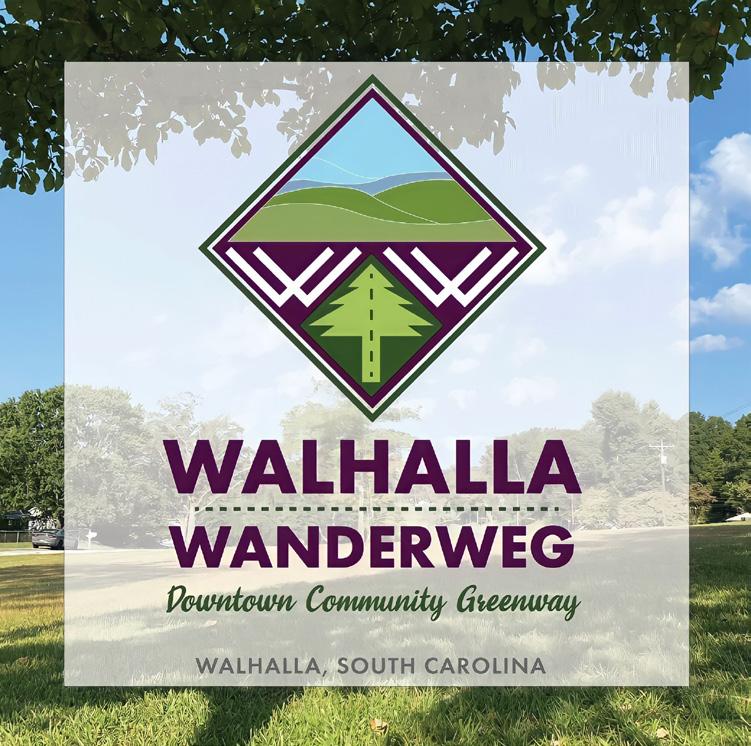
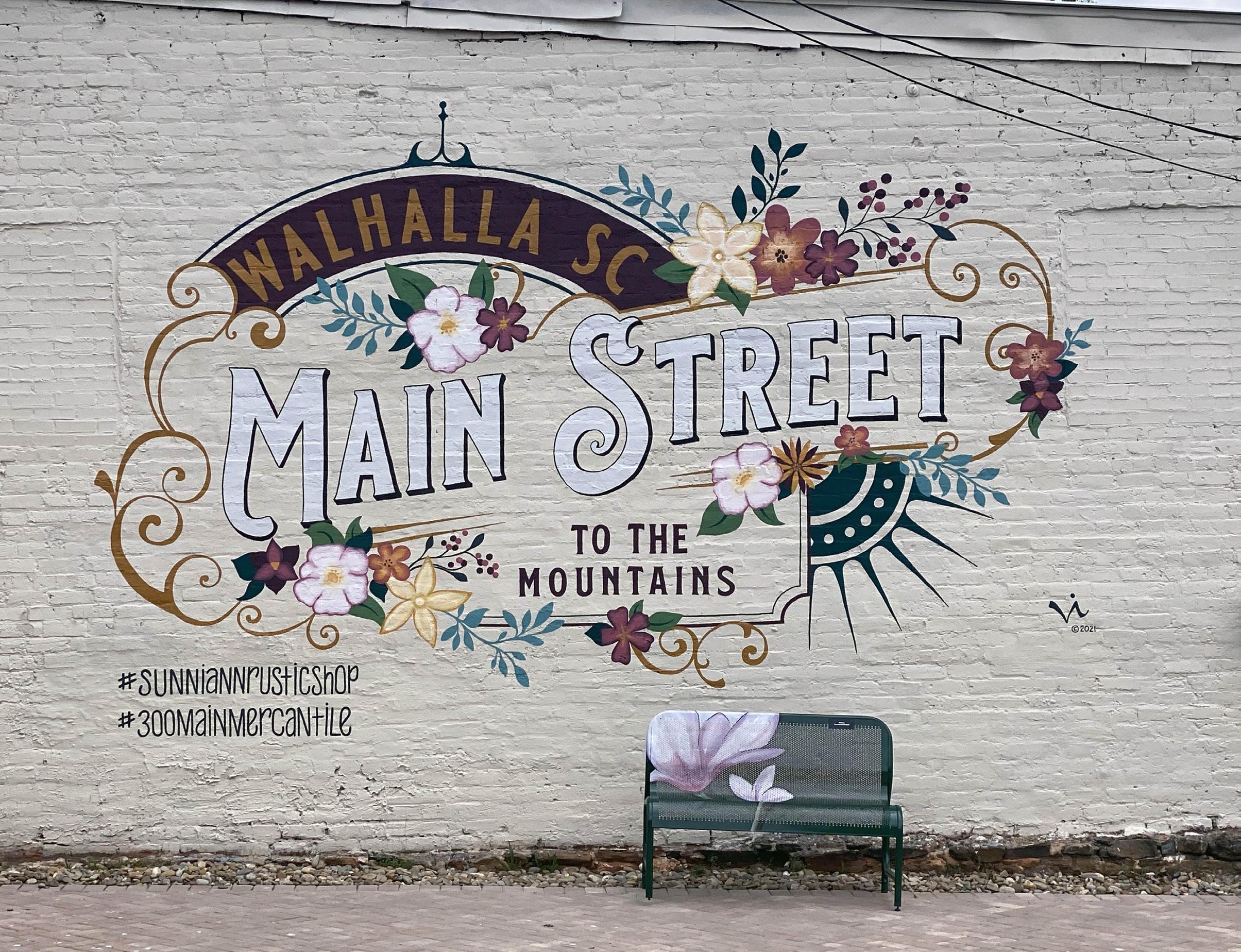
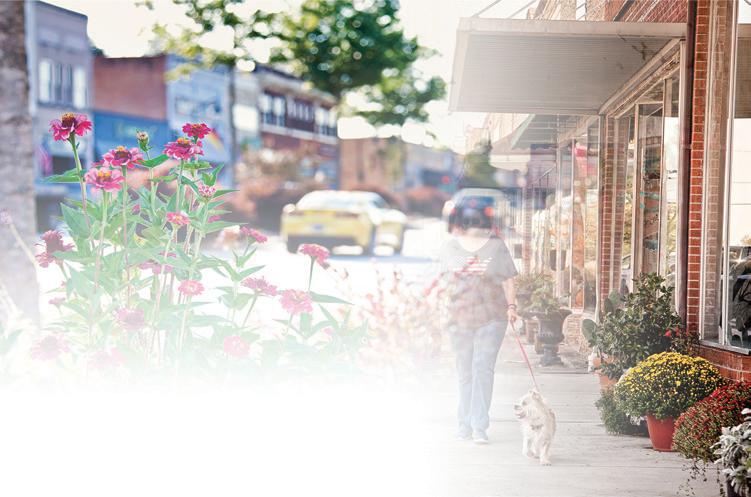







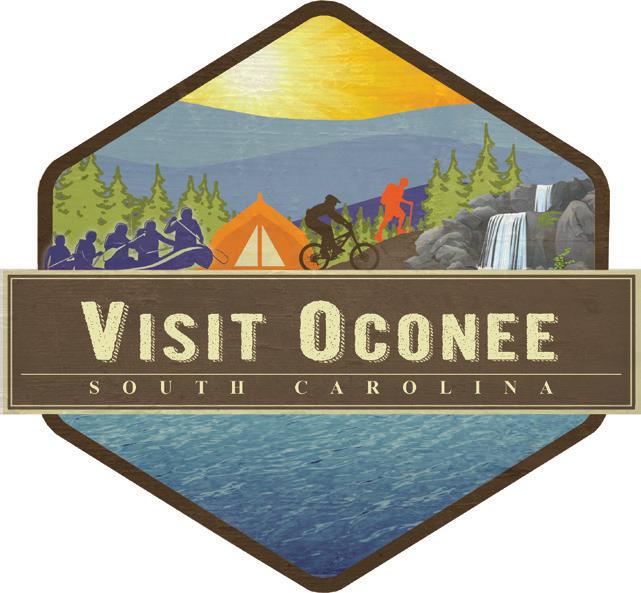






















The Timrod Library sits between Central Avenue and West 3rd Street, not far from Summerville’s vibrant downtown.
Its distinguished diamond window frames have attracted many passers-by, several of which are surprised to learn the building is home to a century-old library or that the history of this place is intertwined with Summerville itself.
For many decades, it was the only library in Summerville and where many locals checked out their first books. It’s one of only a few subscription libraries left in the United States today.
Despite the emergence of public libraries and the shift to digital content, Timrod Library lets readers immerse themselves in hard-copy books. They can attend events with best-selling authors. And access a collection of rare works.

Checking out a book is still a handwritten process. There are no e-books, computers, or online checkout options. And membership renewal letters are often sealed in an envelope and sent by mail.
It’s a place where history has stood the test of time by embracing it.
According to then-Executive Director Carol Scally, the Timrod Library’s legacy began with a group of Summerville women who wanted to get together and discuss books.

More than a dozen ladies gathered in homes, which they soon outgrew. The group’s expansion led it to officially join the Chautauqua Reading Circle, a popular movement that began in the late 19th century with the founding of the Chautauqua Literary and Scientific Circle, which still exists today.
Scally said the Chautauqua reading list emphasized learning at a time when women weren’t afforded many educational opportunities. They read Greek and Roman history and were expected to be prepared for discussion at each meeting.
“Supposedly, once they were through that list, they had the equivalent of a college degree,” Scally explained.
With the group well-established, Summerville’s Chautauqua Reading Circle began envisioning a space to call their own.
They wanted to found a library and, with land donated by the town of Summerville, began raising building funds.
The group hired a local freedman, James Cooper, to build the library. His signature diamond-shaped panes still adorn the building and can be seen in other historic buildings around Summerville.
“These windows are our pride and joy,” Leslie Koller, President of the Timrod Library Board of Directors, said.
The Timrod Literary and Library Association officially opened to the public in 1915. According to Koller, membership libraries were typical of the time, with over 30 operating in South Carolina.
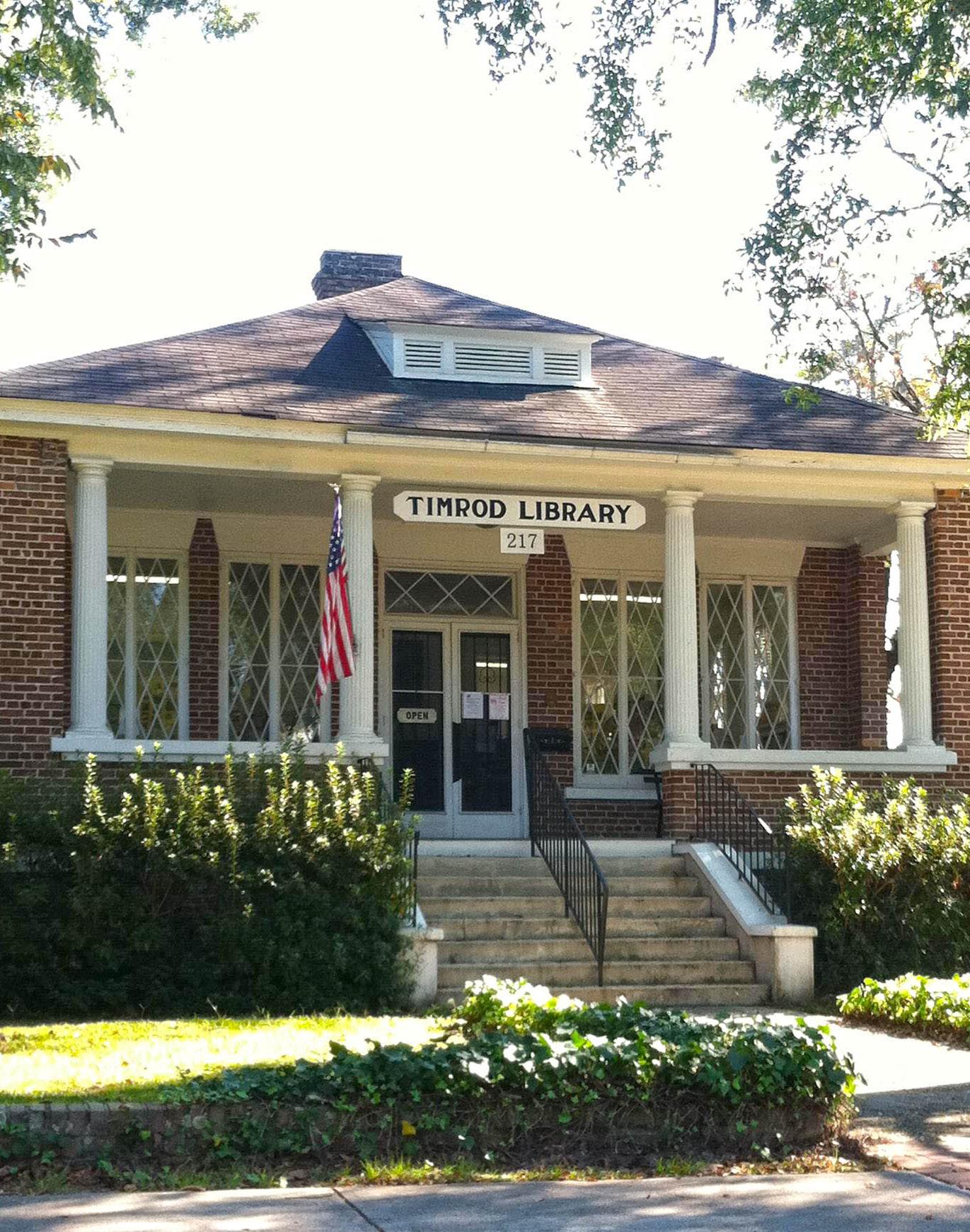
Today, the Timrod Library is one of only two remaining in the state.

Koller, who also works as the Dorchester County Public Library Summerville Branch Manager, said the Timrod Library is never in competition with public libraries.
“We are absolutely in collaboration with each other,” Koller said.
She says the Timrod Library serves a distinctive purpose. It can host and organize events that draw significant authors and attendance. According to Koller, these occasions bring in readers who are typically more interested in literature.
The library’s bricks, old windows, and wood flooring create a perfect atmosphere for some visitors. And it invokes a sense of nostalgia for those who remember library visits from their childhood.
“The ambiance is amazing,” Koller said. “It's like you sit here and you can feel the history coming out of the walls.”
With much of the original building still in use, Scally said maintenance is one of the library's most significant challenges. Keeping the building in good working order is difficult, and the library doesn’t receive any outside funding beyond donations and memberships.
Koller said the library is rethinking how it approaches fundraising.
“This year, we're starting to plan to build annual campaigns for donations,” she explained. “Prior to that, we really just did our events, and we did memberships, and that's how we survive each year.”
This kind of strategy is critical as the library’s leadership searches for ways to ensure it thrives for many decades more.
“Our goal is to be here for another 125 years,” Koller said. “We want to grow and be this historical place that exists in time along with Summerville, the town, but we need help.”
When asked what’s contributed to the library’s longevity, Scally said she believes it’s the members. Camaraderie and connection happen during events and from being part of a unique community in Summerville.
She said the library staff goes to great lengths to find requested books and people enjoy spending time in a quiet, relaxing environment.
Koller said being part of a historical place is a draw for many.
“They take pride in the place and its history,” she noted.
Koller explained that membership growth is slow but steady. And there’s a status to it.
“It’s not meant to be exclusive, but it kind of feels that way,” Koller said.
As she pointed out, membership is open to anyone, and at $25 annually, it’s less than the cost of a new hardcover book.
Koller said the Timrod Library wants to be a destination for well-known authors, where locals can hear them speak and enjoy an event without driving to Charleston or further.
It has hosted authors like Patti Callahan Henry and Karen White. The library also serves as a platform for local historians and authors to discuss their works.
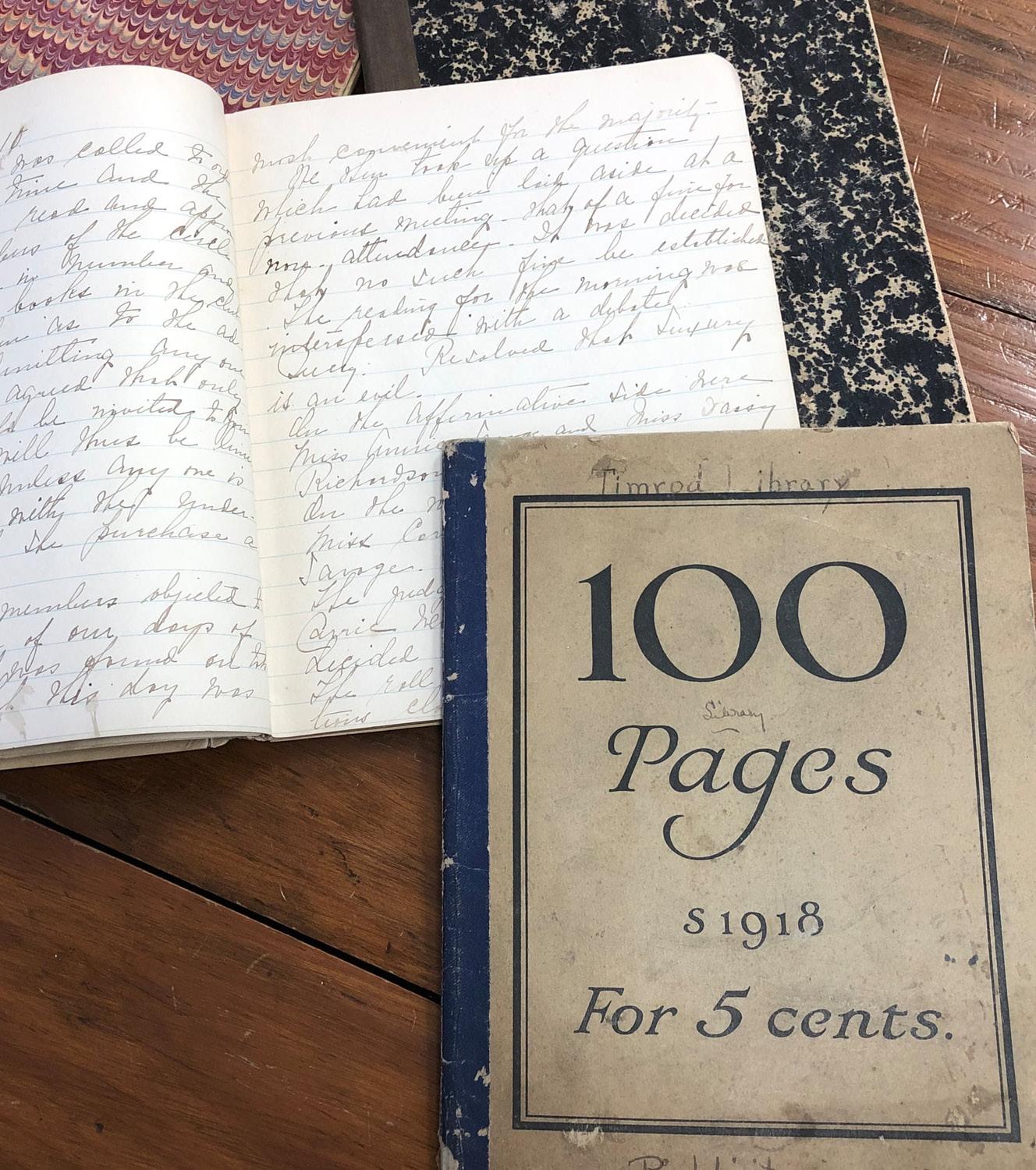
Readers will find works across all genres on the library’s shelves.

But the Timrod Library’s prized collection is housed in the backroom. Readers will find volumes of works by famous poets (including the library’s namesake, Henry Timrod), biographies, and accounts written by Civil War generals. All can be read and enjoyed by visitors.

The library is currently adding bar codes to make inventory management more efficient.
Some patrons have expressed concern about this technological shift, worried it could impact the library’s nostalgic aura. The transition to a digital system is partially driven by the fact that the library can no longer purchase physical record books.
Scally and her staff currently handwrite the records and still have logs that date back to the 1920s.
“So we have to kind of improvise,” Scally said. “We do [the] very old fashioned way just like they did years ago. But you know, I think that's part of our charm, too.”
Koller and Scally said because the library is a self-funded non-profit, any change in the economy can affect donations.
The COVID-19 pandemic had a major impact since the Timrod Library raised most of its budget through in-person events.
“COVID was a big hit,” Koller said. “We all really kind of worried for a minute. Thankfully, our treasurer was able to get a federal grant that was almost our full budget for the year.”
Koller was quick to point out that the library has survived dire times before. It’s weathered two world wars, the Spanish Flu, COVID-19, and generations of change, nationally and locally.
Now, it’s a time of transition at the library. Several board members have retired. Scally herself also retired recently. Her last day as Executive Director was July 31st.
Koller says she’s actively looking for people who have a passion for the Timrod Library and are willing to put in the effort required to be part of a working board.
“But as long as we always have those kinds of people, we could be here forever,” she said.
Reflecting on the library’s impact, Scally said it’s widely felt across many generations in Summerville.
“It certainly opened doors for women way back then,” she said. “A lot of women were educated because of the Timrod Library and Literary Association.”
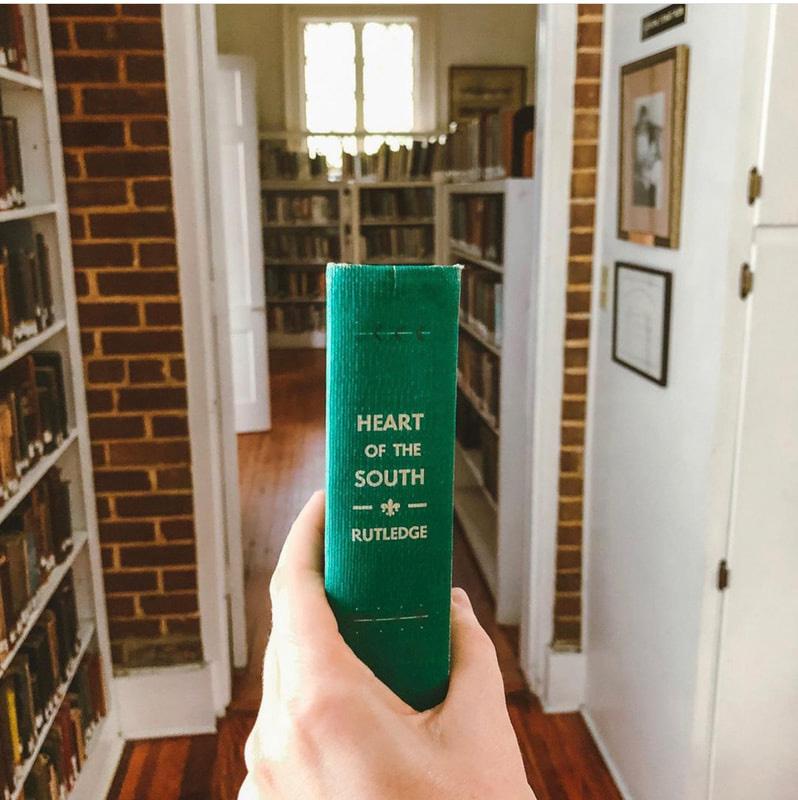
And for many Summerville natives, this was their first library.
“A lot of kids in this town grew up with this,” Scally said. “This was their library.”
The Timrod Library also has to confront the fact that, at one time, it was for white people only. But it opened the doors for all when the African American library was torn down and has remained a place for everyone since.

Today, it seeks to be a place where people can come and find a book. They can gather with others to hear authors speak or discuss literature. A place that is perfectly content being much the same as it was more than a century ago.


A young woman’s passion for rescued and rehabilitated horses is the foundation of comprehensive therapy programs that benefit men, women and children who need assistance working through their life struggles.
Pulling off of Highway 24 and zigzagging onto Wild Hearts Way, you begin to sense that you’re headed to a special place. Along the gravel road, a picturesque and peaceful landscape visually welcomes you with an immediate calming effect. You’ve arrived at Hoppin’ Horse Farm, the home of Wild Hearts Equine Therapy Center, in Seneca, South Carolina.
 Words by Roy Scott Editorial Photos by Rachel Ledbetter
Words by Roy Scott Editorial Photos by Rachel Ledbetter
Equine therapy (also referred to as equineassisted therapy) has become a popular therapy that encompasses a wide variety of activities that include horses for either emotional, psychological or physical growth. It also addresses treatment of behavioral, addiction and mental health disorders. Among the array of approaches involved are clients forming emotional bonds with the horses to care and grooming to studying their movements to rhythmic riding, just to name a few.
The practice of using horses for therapeutic purposes is not new. Hippocrates, who lived around 400 B.C., was said to have mentioned the potential of horses being useful for helping to manage health, especially for strengthening body muscles and keeping them in good form. However, equine therapy wasn’t adopted in the modern world until around the 1960s.

At the Wild Hearts Equine Therapy Center, this cutting edge approach is given a unique twist. With the exception of one horse, all of the horses are rescues. They come from various situations, many from hard places. The farm provides an environment that is consistent, clear, calm and safe. The horses know what they can expect from day to day, and they learn what is expected of them. Jessica Fry, president and CEO, along with a group of dedicated volunteers, established the Wild Hearts center in 2015. Their goal was to provide customized equineassisted therapeutic programs for those dealing with physical disabilities, PTSD, behavioral or social issues, and abuse.

Just seeing or being with a horse has the ability to make people feel good. What is surprising is that creating a relationship with a horse can also make people feel good about themselves.

“We all have a heart, and all the horses have hearts," explains Fry. "When they’re happy and safe, a horse’s heartbeat is between 24-44 beats per minute; that’s really low. When humans have anxiety or trauma, their heartbeat is between 80-120. Most of our clients would be diagnosed with anxiety or PTSD, so they have very high heartbeats, but when they come to our farm, before therapy even starts, when they’re just around these horses, it brings the human heartbeats down, and that brings a feeling of joy.”

It has also been proven that when in the presence of a horse, human blood pressure is reduced, and human serotonin and dopamine levels are increased.
A significant benefit of equine therapy is the fact that humans and horses require no words to communicate. The communication that they do share is generally done solely on an emotional level, and people are often able to be more vulnerable around horses than they are around other people. This means that being around horses helps to open up a non-judgmental and unbiased relationship in which a person can learn to express and understand themselves better.
According to horsemanship clinician, Tim Hayes: “The more we learn about horses and how they live their lives, the more we, as humans, can identify with them. Horses and humans are both greatly motivated by fear. If all horse fears can be reduced to one—the fear of being eaten—it could be argued that all human fears can be reduced to two: the fear of losing something we have and the fear of not getting what we want. It is said, 'That which is most personal is most common.' Perhaps what draws so many people to horses is the realization that they, too, on a deeply personal level and in so many ways, are very much like us."
“If we have a client who comes to us with trauma, they might need a session with one volunteer and a facilitator,” Fry says. “They go out into a pasture and just sit or work on breathing or listen to music while brushing their horse, or maybe we’ll do some rhythmic riding. And then when we have someone with physical disabilities come out, we will typically try to help them use muscles that they don’t use in everyday life due to their disability. We get them up on a horse and start movement so that they are using those muscles, and then as they do that week after week those muscles become stronger.
“We go out and get certifications in all these different therapy modalities,” she says, “and then we partner with the horses just like you would with a friend. It involves a lot of research, a lot of speaking with counselors, a lot of speaking with veterans, a lot of beating feet around town, and a lot of continuing education. That’s the basis of our programs.”

Horses are totally honest. Everything about their body language communicates the truth about how they are thinking and feeling at a given moment. They never lie to each other or to humans. Therefore, it’s impossible to deceive a horse. Humans can often hide negative emotions from other humans by pretending to be happy and relaxed, but the masquerade doesn’t work with horses. They will know immediately from the person’s body language.
Horses live in the moment and have no concept of the human invention called “time,” so they never worry about running out of time or being late. Our schedules, agendas and deadlines prevent us from living in the moment and very often lead to depressed and disappointed concerns about our past and future. Mark Rashid, horseman and author, puts it this way: “If we are impatient, it is because we are concerned with ourselves. When it becomes about the horse, we’ll have all the time in the world.”
A 2018 study published in Scientific Reports found that horses are possibly able to perceive emotions in human facial expressions and human voices. In addition, they do not ask, demand or expect anything from us. They want to feel safe, comfortable,

and get along. If a person is angry, they shy away. If a person is scared or timid, they, too, feel scared. For these reasons, partnering with a horse has become a prescribed therapy for many who are dealing with PTSD, addiction, depression, abuse or other forms of trauma.

According to researchers who studied the benefits of equine therapy, they report that older adults with cognitive or functional impairment showed increased human social interactions and positive influences from peers. Military veterans experiencing trauma, stress and anxiety showed fewer physical signs of stress when participating in an equine therapy program. When introduced to equine therapy, at-risk youth members in one study were reported to show positive effects on their resilience and reduced risks of crime, self-harm, and other issues. Another study revealed that equine therapy is also useful for some autistic people, and that for people who find it difficult to open up to others, working with horses may provide a more relaxed environment to build trust and a therapeutic relationship. These are but a small sampling of the individuals benefiting from equine therapy.
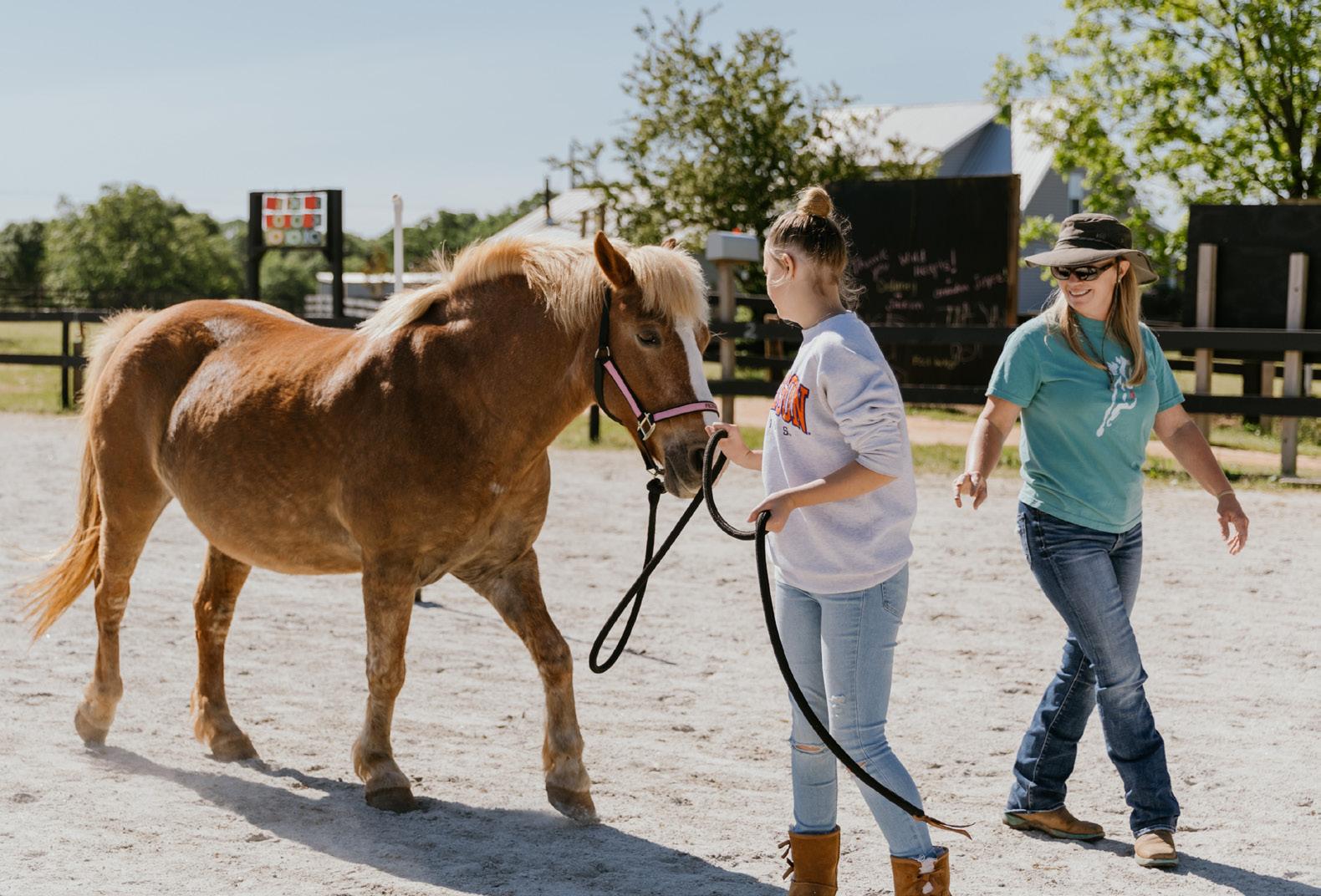

At this writing, the 34-acre Hoppin' Horse Farm is home to 33 horses and donkeys, ranging in age from 4 to 26, that Wild Hearts Equine Therapy Center has retrained for therapy partnering. “All of our horses have their own personalities and their own opinions," according to Janine Hartley, director of operations. "We want it that way because each client needs something different, and we want the horse to be able to connect and provide what's needed. Our programs are designed for local students, atrisk youth, active-duty military and veterans, senior citizens, people with disabilities, corporate team-building, women's empowerment, and much more. We are currently seeing 100 clients per week, and involving roughly 60 volunteers each week."
From the moment you arrive at Wild Hearts Equine Therapy Center, you know that you’ve come to a place like no other. A place of endless possibilities. A place where people thrive. Jessica Fry proudly states: “Our rescued horses help to rescue the people in our programs. The kids, adults and veterans help our horses by giving them a job!”
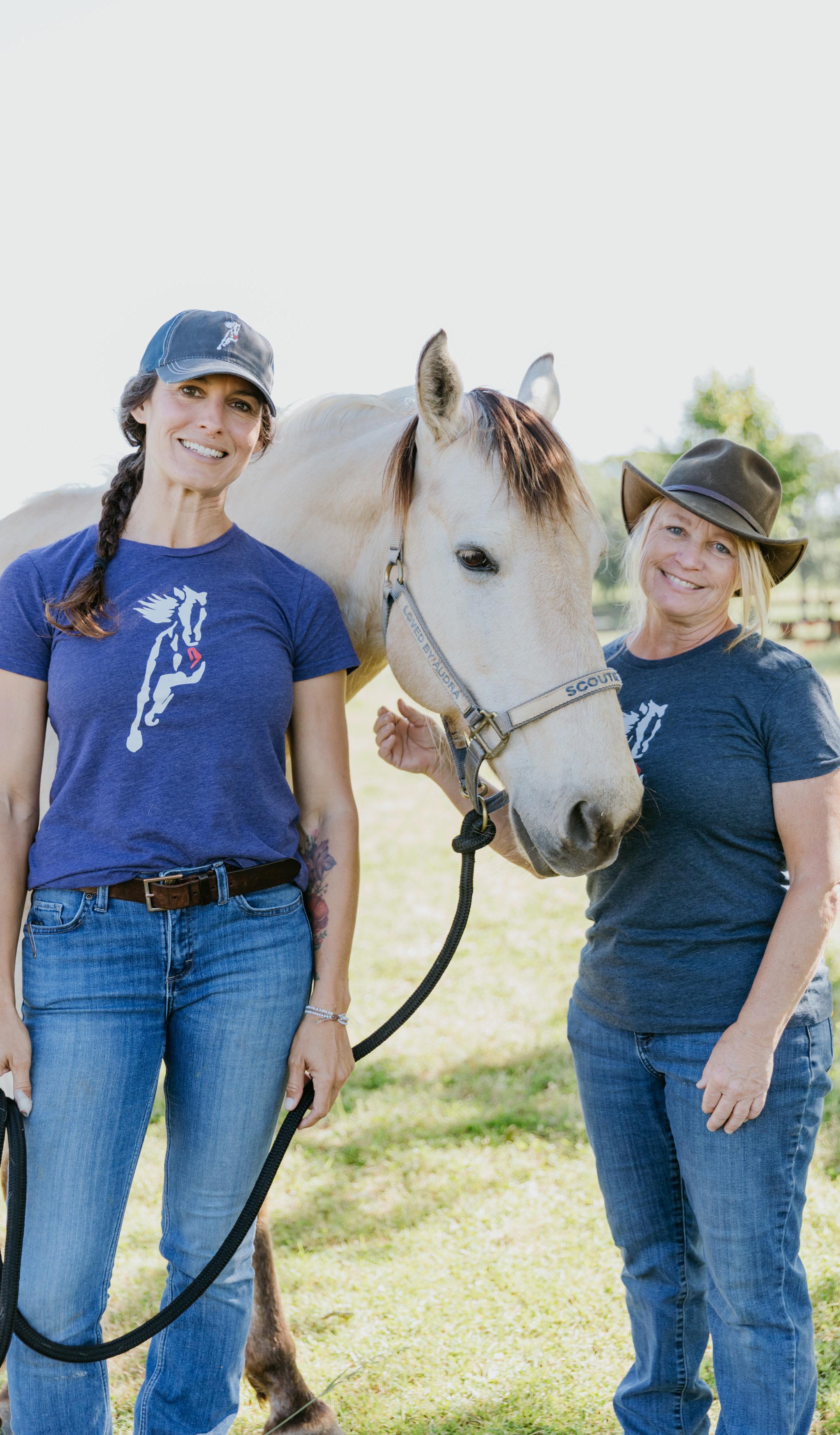
The following inspirational verse (author unknown), that summarizes the “Horse First, Client Led” spirit at Wild Hearts, is posted on the center’s office wall:
“When you cannot walk, let me help you to run. When you are afraid, let me teach you to trust. When you feel weak, let me help you build your strength. When you can’t find your voice, let us speak without words. When you cannot reach, let me raise you above the world. When you want to give up, let me show you how far you can go.”
For more information: wildheartsequinetherapy.org
L-R: Jessica Fry, president & CEO, Wild Hearts Equine Therapy Center; "Scout"; and Janine Hartley, director of operations.

 Words by Darlene Greene
Words by Darlene Greene
Wellness is a pro-active effort to create harmony within the body and mind to achieve optimal health. The mind, body, spirit connection is often lost in today’s high stress environment. What you think, what you do, and what you eat are all components that make up your overall health profile.

Changing your habits can be challenging! If you try to make multiple changes at once, it is overwhelming, and you will likely stop before you ever start.
Begin by taking one small step on the path to creating wellness. Do you want to spend a few minutes meditating everyday before work? Do you want to increase the amount of pure water you are consuming each day? Do you want to go to bed an hour earlier each night, so you get more quality sleep? Do you want to schedule a regular massage?
Tony Robbins said, “Getting healthy isn’t about willpower. It’s about focus.” It is easier to focus on one step at a time, rather than the entire journey all at once.
Just choose one thing you want to do differently, do it for several weeks or months before trying to add another. Give yourself credit for taking steps to improve your wellness and, after you feel you have comfortably established your new routine, you can choose another step to take. If it makes it easier, consider asking a friend to join you on the journey. An accountability partner or supportive friend to share the journey can make it more fun and easier to stay focused on your goal--wellness.
Small steps taken regularly can create big changes over time. Remember, “if you don’t make time for your wellness, you will be forced to make time for your illness.”
– Joyce Sunada


